Malibu
Express
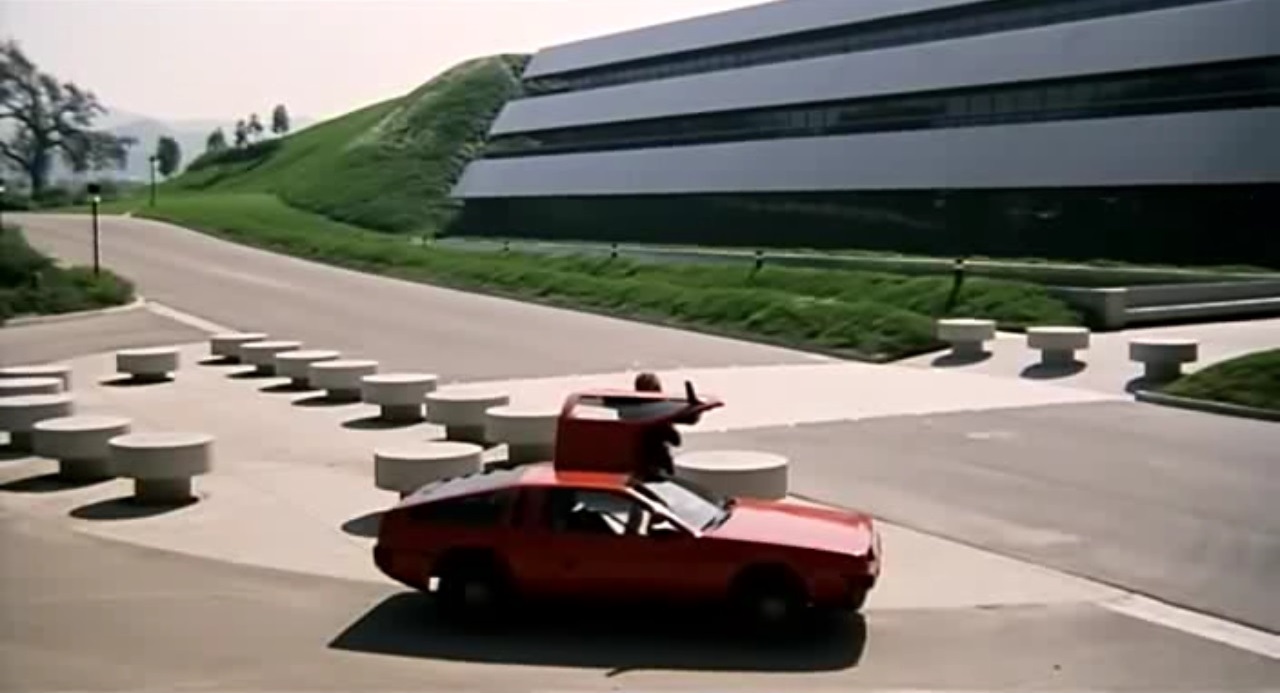
A motor yacht at
the Marina (you enter through a caboose in honor of late lamented mater, lover
of trains). A Texas dick with a certain resemblance to
Thomas Magnum, the original Cody Abilene (“don’t let that cowboy
charm fool ya, he graduated summa cum
laude from Texas University”), has to deal with Russians stealing
Yankee computers, a family with ties to the industrial front for the operation,
and a blackmailing chauffeur (“I believe you Texans call it laying
pipe”) whose bookie won’t wait. It opens
by parodying Death Wish and whatnot
at the pistol range, “it’s these hands, they’re the lethal weapons.”
“Yeah,
just be careful when you play with yourself.” It’s
all corralled in The Big Sleep
(dir. Howard Hawks or Michael Winner). A work
of genius (the two “little ladies” in the slip next to him magnify
Chandler by a factor of Antonioni).
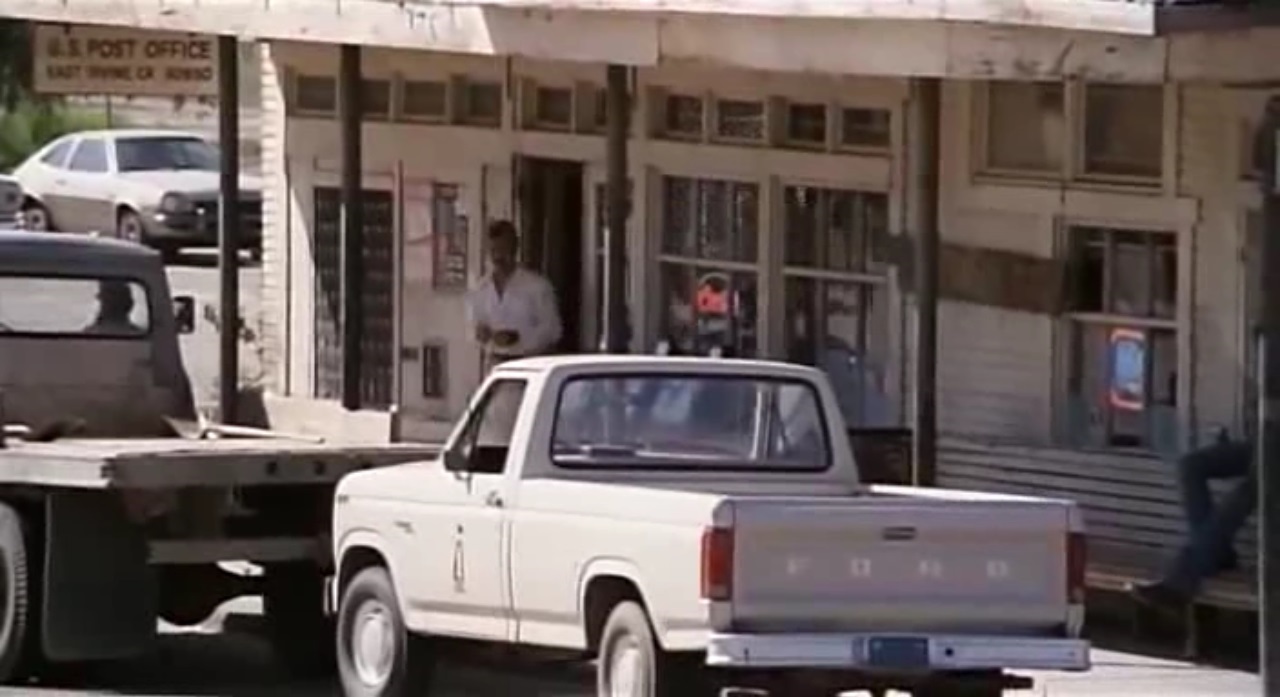
Cobra’s house in Beverly Hills (Day of the Warrior) here serves for the Contessa, home from “a wonderful vacation in the
south of France” on this assignment. An ancient
feud over stock cars, the Abilenes and the Buffingtons, “fair? You wan’
fair, go to church, boy!”. Lady Chamberlain of Bel-Air with a bullhorn in a wheelchair “because she
had broke her leg in a skiing accident” just one step behind Sissy Goforth in Losey’s Boom. The computer import-export man and
his three goons, Matthew, Mark and Luke, “you know, we have worldwide
computer investments for those people who’ve trusted us with their
finances, we’ve made enormous profits for them, things look even better
in the future.”
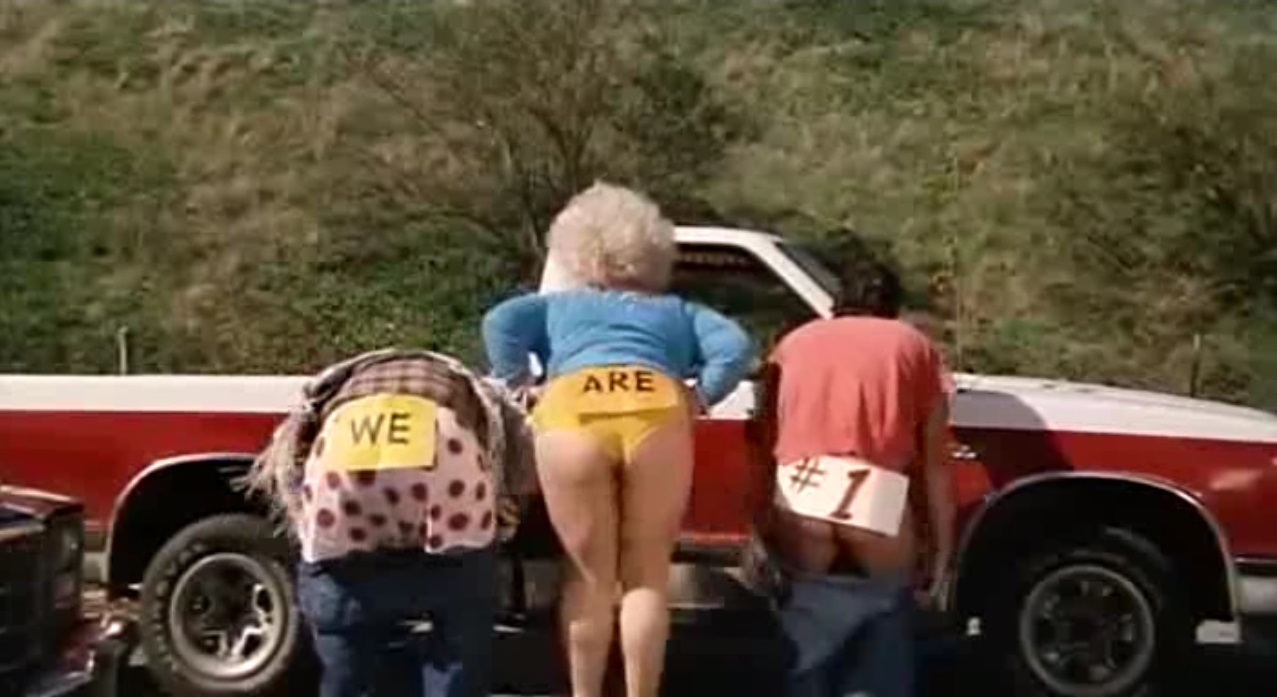
“Boy, that was really a horseshit trip to Palm
Springs! I got my ass whipped, m’ borrowed car
shot up, and I was raped. Y’ know, time to see just what the hell’s goin’ on around here.” Lady Chamberlain’s nephew, drag queen at a bar
on the Strip called The Screaming Cockatoo (homage to Orson Welles). “Let’s have some champagne and toast my
art-selling trip tomorrow,” says the Contessa,
very nearly barefoot.
“I’ll toast,” replies Abilene,
“but I better stay alert tonight,” a thirsty man with a long row to
hoe. “Can I have some designer water?” The maid, whose name is Marian, figures in the joke
of the decade, “did you hear that she got raped this afternoon by two
homosexuals? One held her down and the other one did
her hair!” Industrial phone sex out of
Eastwood’s The Enforcer (dir.
James Fargo). “Body by Fisher, brains by
Mattel,” as they say at the Richard J. Riordan Central Library.
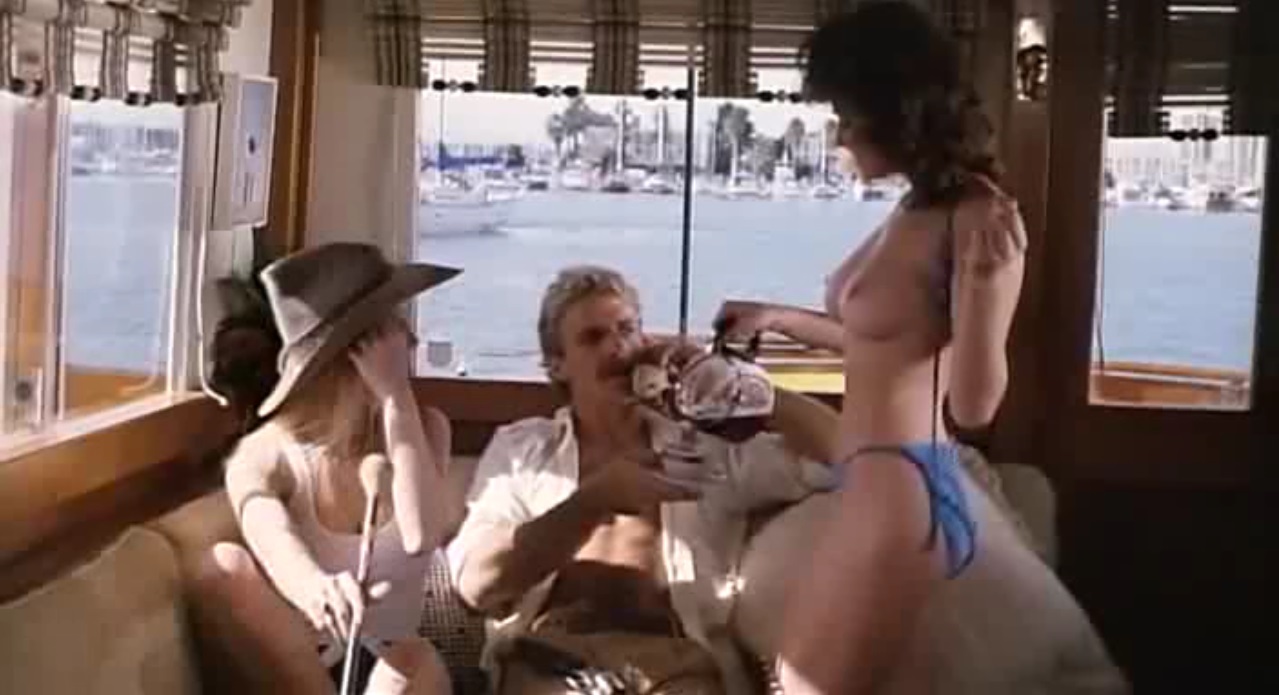
The director and screenwriter drives a mobile home
through Russ Meyer’s desert landscapes, “I guess we must be near
Hollywood!” The conclusion and departure (Hard Ticket to Hawaii) is filmed with The Last of Sheila (dir. Herbert Ross)
evidently in mind. A masterpiece in the strictest
sense of a certification by the guild, shit-kickin’
score by Henry Strzelecki with a certain resemblance
to Henryk Górecki
(cinematography Howard Wexler, “no relation to Haskell”).
|
He drinks his whiskey straight, the only thing he likes to chase is bad guys and ladies of the night. |
Eleanor Mannikka (All Movie Guide), “routine erotic
spy tale”.
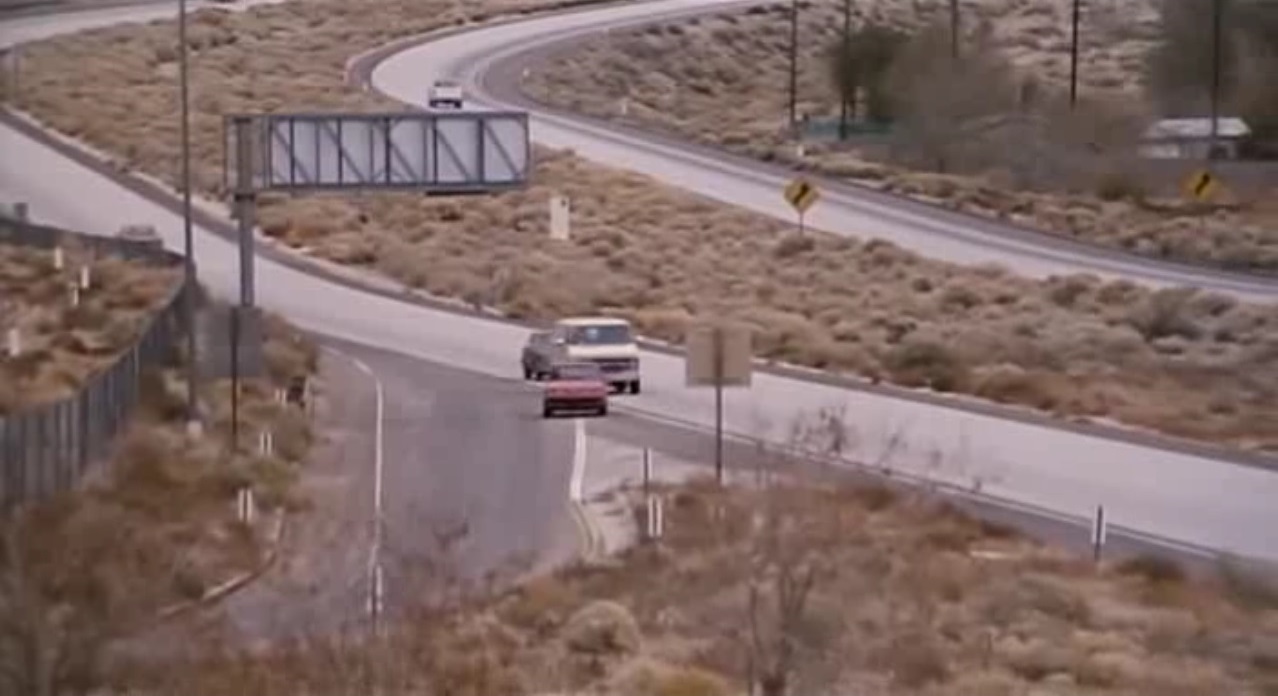
Hard Ticket to Hawaii

“We got
trouble in paradise, amigo.” Local weed turns
industrial, cp. Cherry, Harry, &
Raquel! (dir.
Russ Meyer). The trade pays in diamonds from Mr.
Chang, Losey’s Modesty Blaise
is not without influence in these parts, far from it. Kwan
Hi Lim, a favorite actor in many and many a Hawaii
Five-O role, plays an H.P.D. officer near retirement, hung by his heels and
shot in the back with his young replacement, cp. Dogboys (dir. Ken Russell).
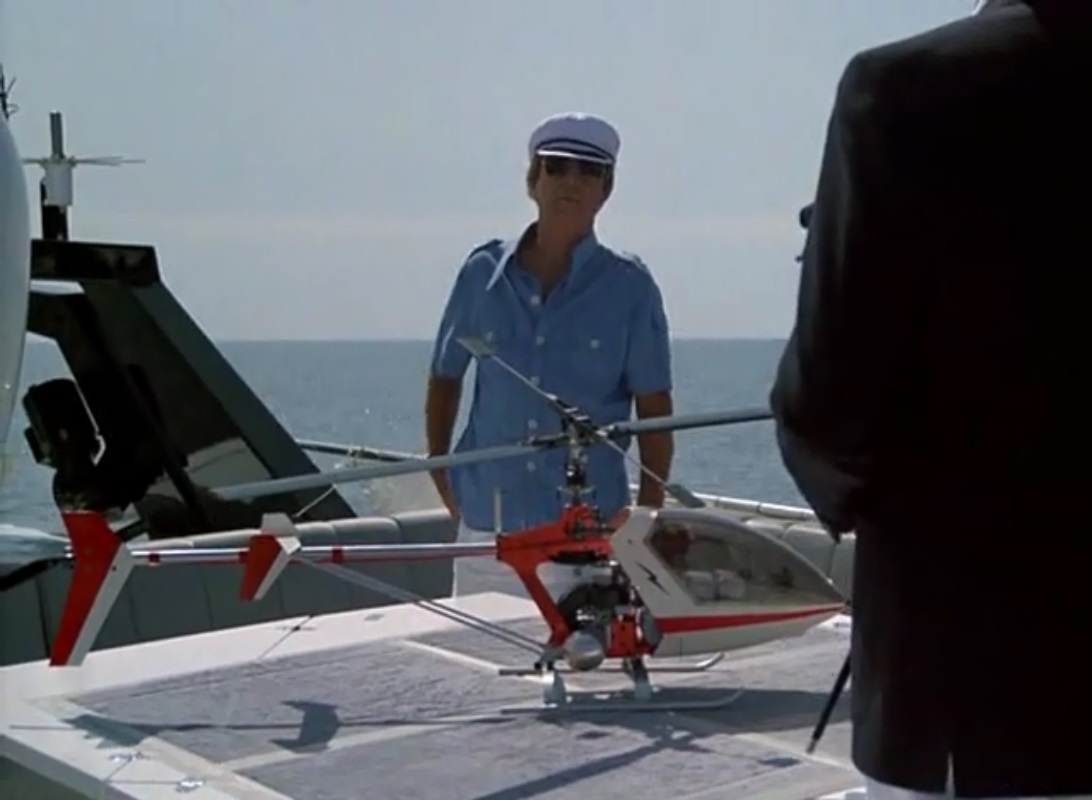
The director at Edy’s, “Charlotte, I’m not just some
fast-talking New York television director, I care for
you a great deal, trust me, Charlotte.”
“You
practically raped me last night.”
“That was
last night, Charlotte, this is today.” This
early work of Sidaris has genius enough for ten films, with all the elements of
his style and very nearly the sweet perfection of his camerawork and editing.
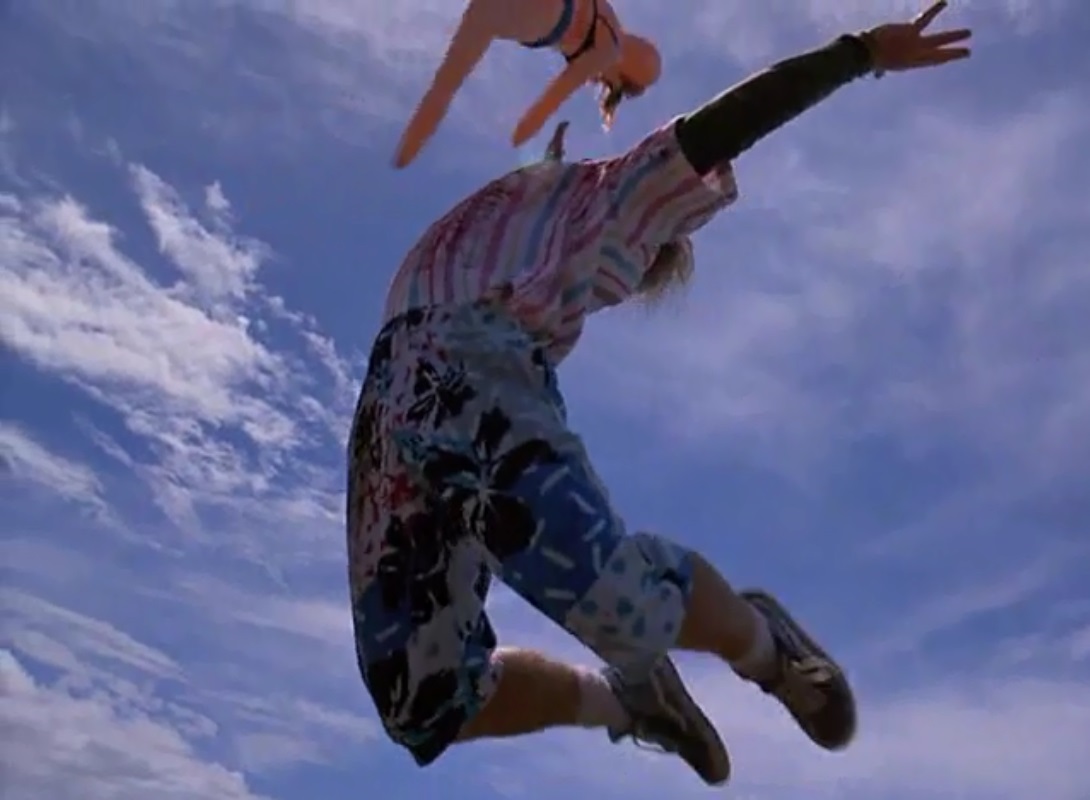
Part of the pun
in the title is an arduous satiric lift from the San Fernando Valley to the
Sandwich Isles via cruiser Malibu Express, a great accomplishment
in itself, “so tell me, waddayou feel?”
“One
man’s dream is another man’s lunch.”
“You son of
a bitch.” Executive-level mobster to a couple of
very dumb thugs, “if brains were birdshit,
you’d have a clean cage.” Death of a
shotgun-wielding skateboarder using an inflatable doll as a shield, blasted by
a “bazooka”. A transvestite behind the bar
at Edy’s with an extensible phone bug. A sumō
school, for using the pay phone.

A film with the
tang of suntan lotion. “Well, the Health
Department hasn’t found the snake yet, but according to their
calculations the snake’s own toxins will kill it within the next
thirty-six hours,” cp. The War of the Worlds (dir. Byron Haskin). From
the torturesome bodybuilder in her bikini
manipulating a pair of numchucks statuesquely for the
camera, to the razor Frisbee butchering a casual armed guard on the beach in
Olympic slow motion, the invention is tense and very amusing.
The second finale
is stupendous. A girl is put in the situation of Broken
Blossoms (dir. D.W. Griffith) and The Shining (dir. Stanley Kubrick), but responds with a hastily-loaded speargun and escapes, the scene continues as an invocation
of Terence Young’s Wait Until Dark
(switchblade, refrigerator) until, sitting wearily on the floor beside the
bathroom bowl she is surprised when a greenish glow erupts from it at one flush
as the angry snake, which kills the greatly bloodied mobster and is defanged by
the girl with two studied shots from a small pistol before a motorcyclist
crashes in to behead the beast neatly with a rocket gun. “In a
pig’s arse,” says Chang in the third, brandishing a samurai sword
against defenestration.
TV Guide,
“the plot here is secondary”.
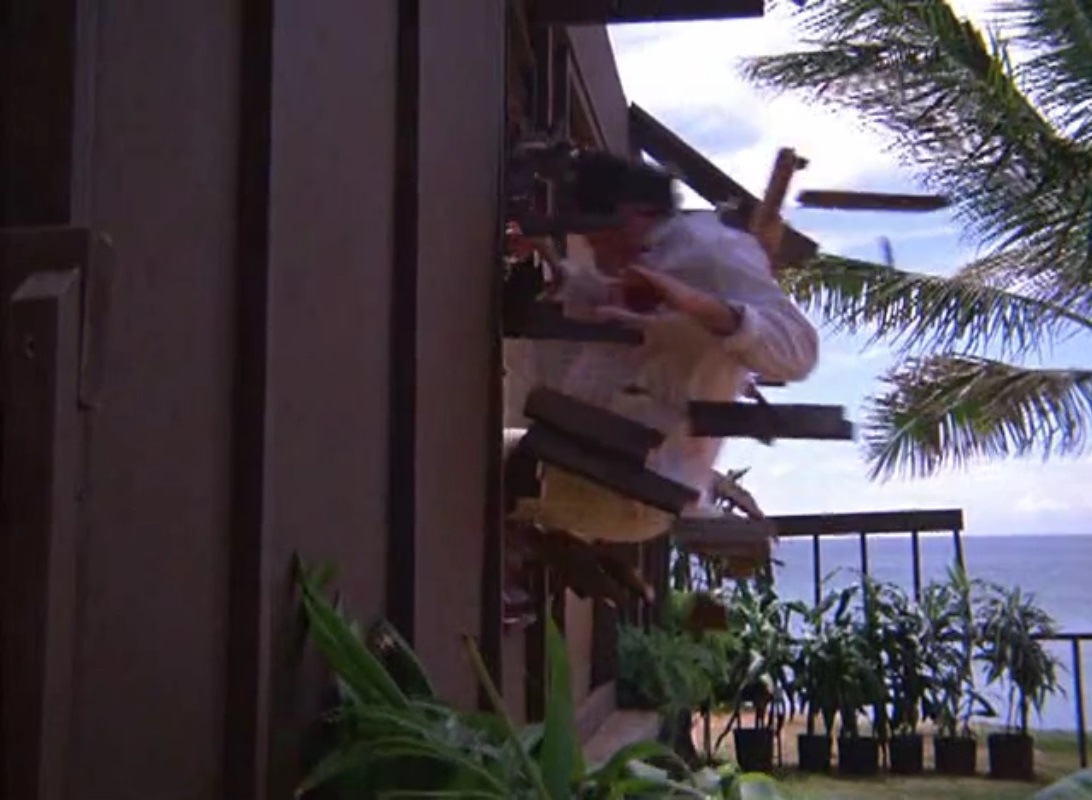
Picasso Trigger
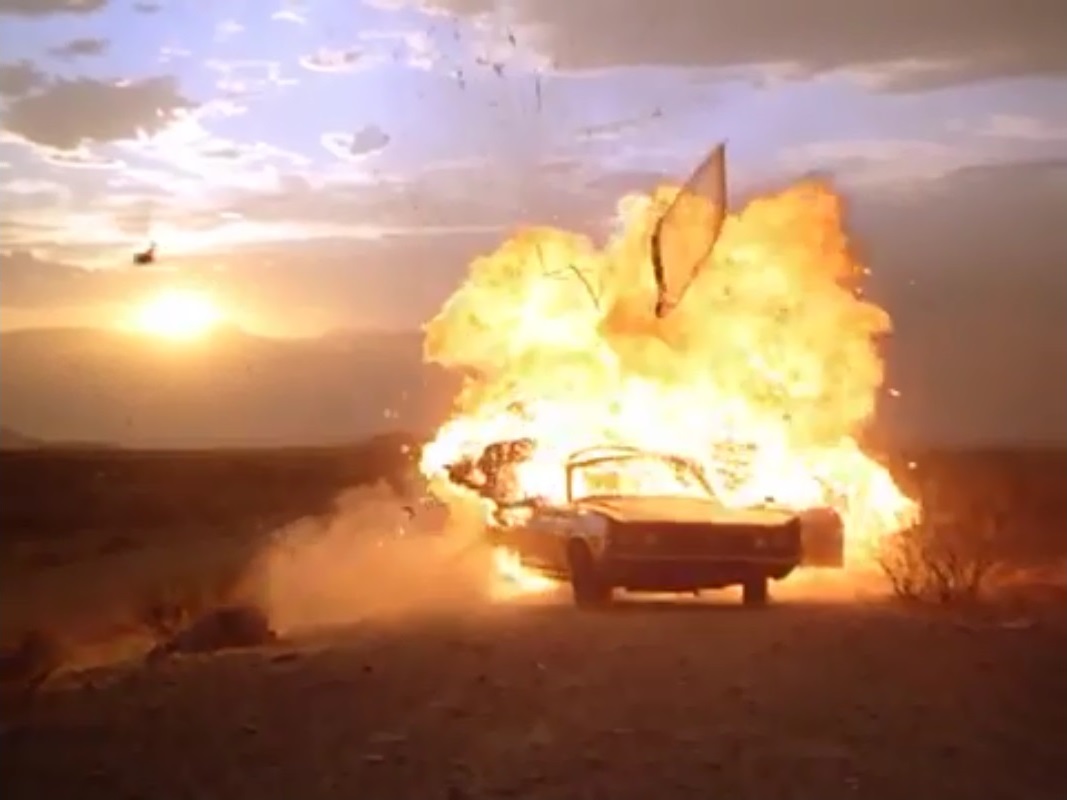
“A
multimillion-dollar endowment bridges the gap between outlaw and
philanthropist.” Question of vengeance for the
killing of a gangster’s brother by Federal agents. Cf. J. Lee Thompson’s Death Wish 4 (The Crackdown).
Sidaris has
certainly found a charming way to make movies. The
exhilaration of Hal Needham and the refinement of Russ Meyer aren’t lost
on him. There’s more than meets the eyeful in
these beautiful pictures with an offhand grandeur of settings like the terrace
of a Hawaiian home along which an operative tensely walks while the breeze
stirs the houseplants in a take just long enough to introduce sun and wind as
co-stars (cp. Big Jim McLain, dir.
Edward Ludwig). That’s the whole charm of it, an
equable vision of able girls and brave men and droll action and gizmos,
vehicles, boats, skyscapes, etc.
You could watch Picasso
Trigger for the editing alone, it’s an equal
participant that’s exemplary in making the most of any gag or scenic
arrangement, satisfyingly laid out as a perfect allocation of resources from
shot to shot.
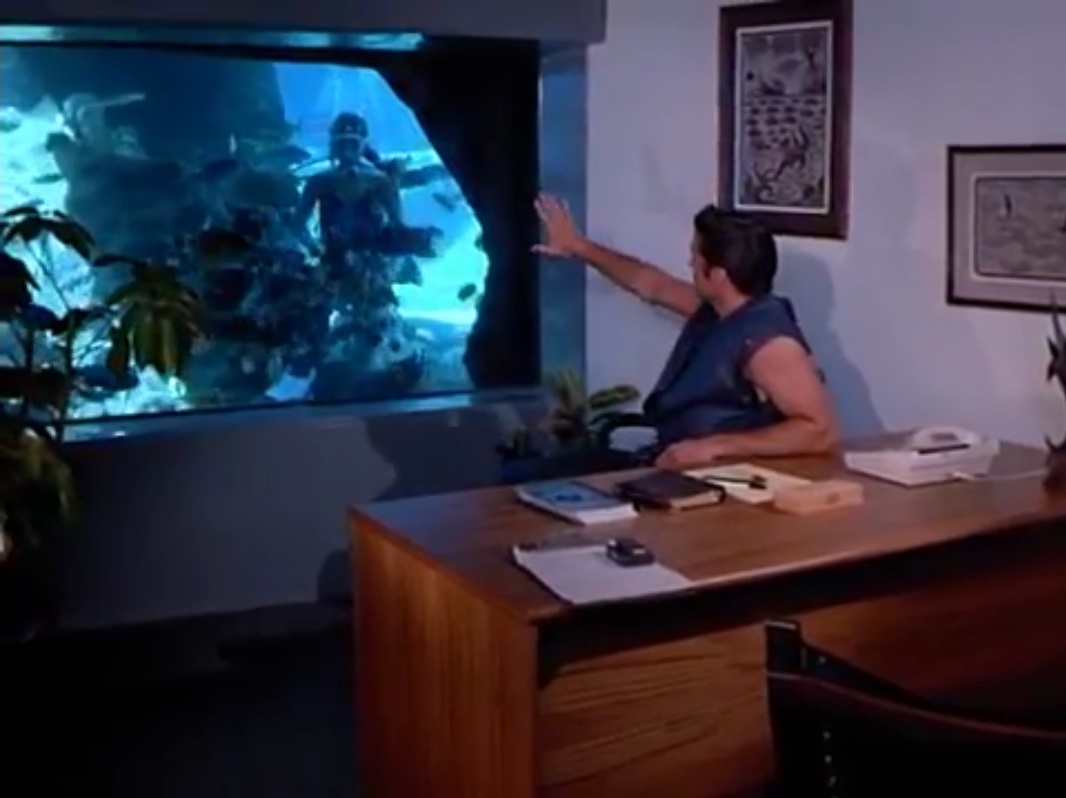
The director taps
a 93-foot putt, smokes a leisurely cigarette while it takes the high ground on
the periphery of the green, and is there to collect when at length it drops in
to win a wager.
Two cowgirls
dance onstage for a passel of mobsters at the Sands, pull out guns and start
firing, one thug shoots back, a girl falls wounded,
the other is in peril when a he-man rescues her in the end.
A he-man karate
fighter takes on large adversaries in a small room, he prevails, bullets pierce
the wall behind him, a bloody-eyed brute smashes through the drywall and blazes
away, one of the girls enters after him and blasts the
brute.
A constant stream
of amusement, derring-do and whatnot with no slackness and a sense of humor as
fulsome as the girls, as knowing as the guys, as beautiful as the locations,
and as clever as the title. A mob soldier observes,
“it’s another bitchin’ day in
paradise, huh?”
“You bet,
dude,” says a colleague. Crutch gun by Salvador
Dali.
The Legion to
Ensure Total Harmony and Law face international criminals dealing in white
slavery and snuff films out of Dallas and Las Vegas, the title character endows
the new Paris Museum of Contemporary Art with cocaine money and a painting of
the Picasso triggerfish worth three million dollars just before being shot by
his own valet (a man in black who wears the Iron Cross on a necklace) from the
sidecar of a motorcycle parked outside.
TV Guide,
“silly, picturesque... an undemanding diversion”.
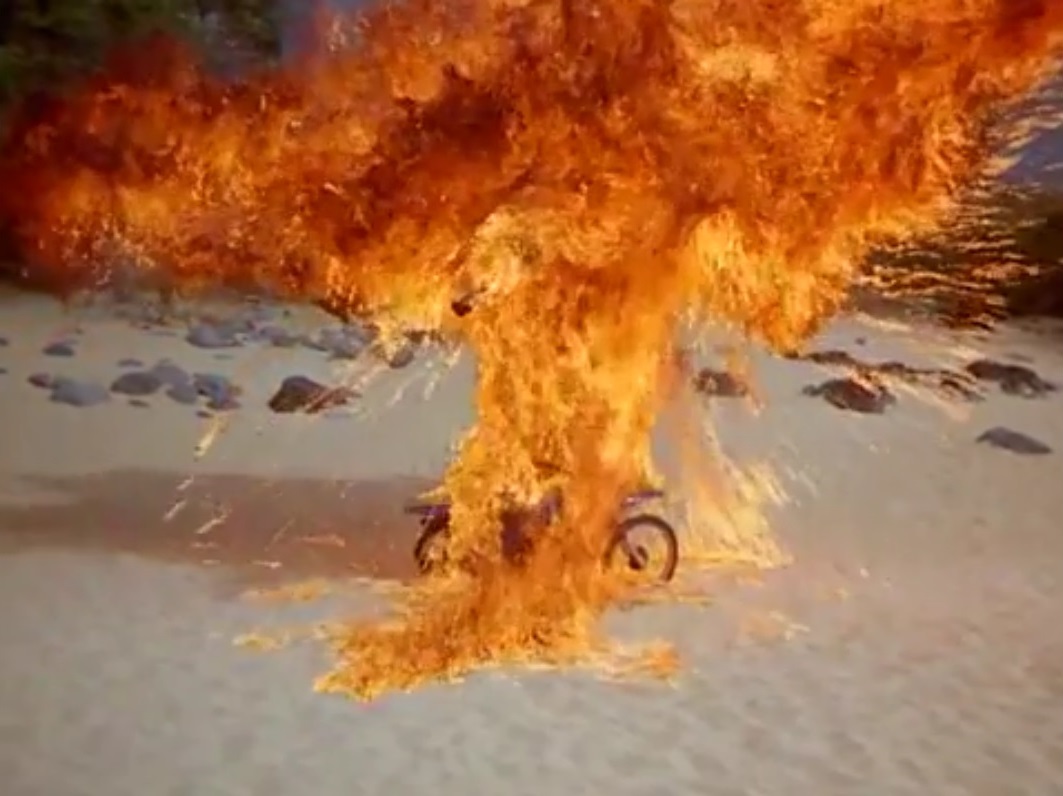
Savage Beach
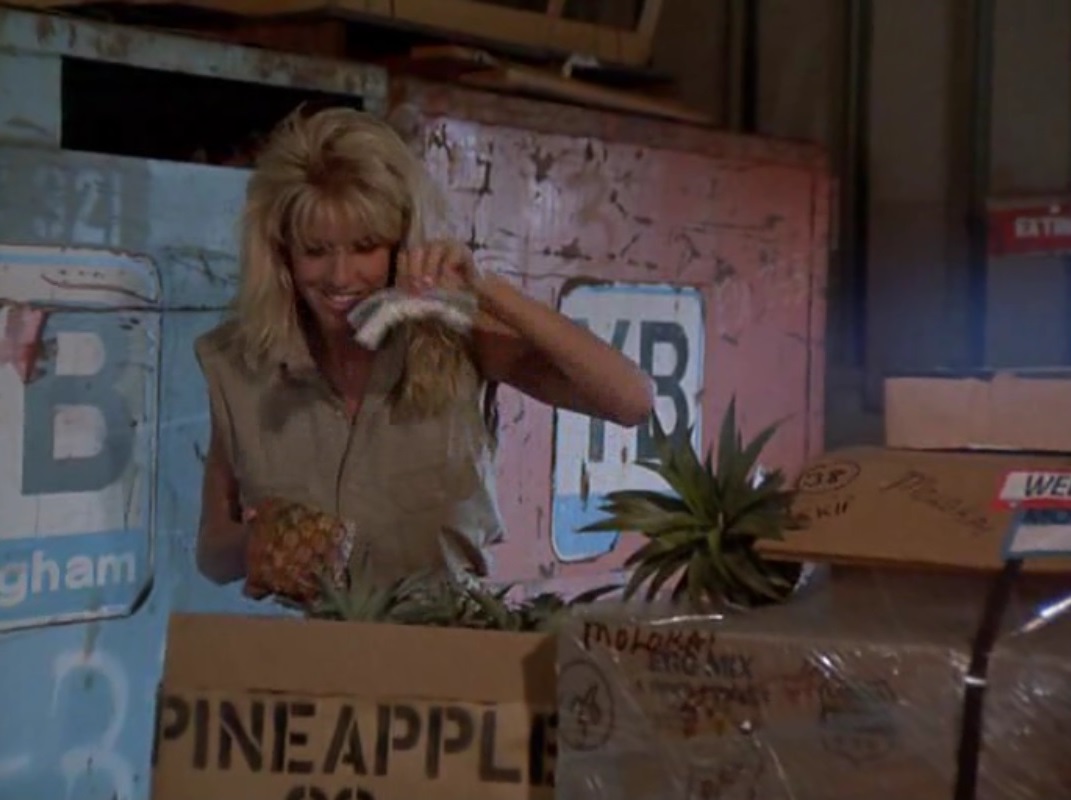
This fairly early
Sidaris film is closer to his series work, so the very divergent style is seen
close at hand, as it were. His two agents at the
beginning are models in mufti who raid a dockyard warehouse full of pineapples
stuffed with drugs. A cross-theme from The Third Man (dir. Carol Reed) sends
the agents to the Marshall Islands with serum in a storm.
A region
described as “remote” and “violently unstable” in the
meteorological sense gives the locale of the title, “about six hundred
miles northeast of Molokai” by chart and sextant.

There is a good
deal of Japanese plunder from the Philippines lost to sight after World War II,
some Navy men are after it privately but there’s a dragon guarding it, an
old soldier of the Imperial Army who has a samurai sword and an abiding sense
of bushido (cf. Sternberg’s The
Saga of Anatahan, Fuller’s Tinikling, or the Madonna and the Dragon). “It will provide arms for a Japanese military
government after the war.”
“Heh-heh-heh, in my opinion General Yamashita wishes to
steal this gold for his own
benefit.”
“General
Yamashita would not betray the people of the Rising Sun.”
“I envy
your devotion, and I pray for your safety.” The
construction is very close to the manner of Hawaii
Five-O in several instances, “Savage Sunday” (dir. Reza S. Badiyi), “The Ninety-Second War” (dir. Bob
Sweeney), “Murder: Eyes Only” (dir. Michael O’Herlihy),
“Legacy of Terror” (dir. Bruce Bilson)
etc. “Finally, after nearly half a century, we are ready to reap the
spoils of the great war.”
“What a
coup. This fortune will support the revolution.”
“We will be
revered by our party. Our names will be in the history
books.”
“My
ideology means far more to me than fame and adulation, the good of the party is
my reward.” This is not the sort of thing meant
by critics when they repine for want of “drawing room comedy”, which really is a matter of empty outlines in a
book you fill in yourself amongst your colleagues, with crayons, critically
speaking.
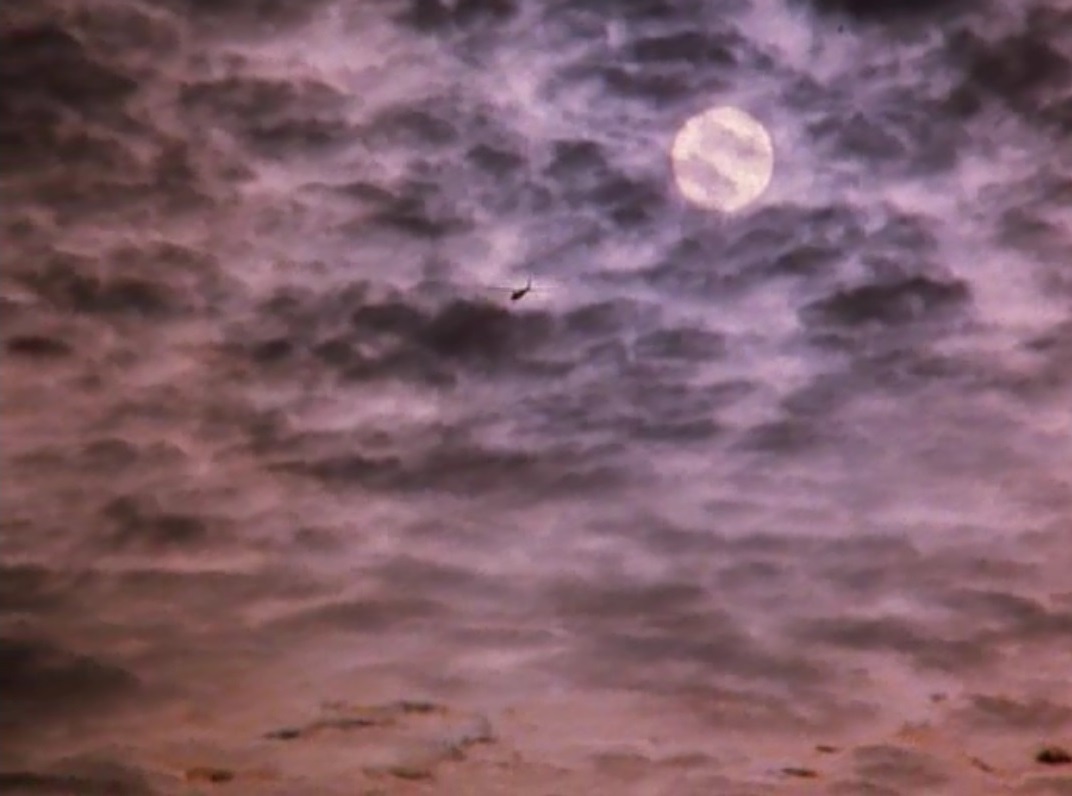
On the return
from Knox Island, “damn it,
this storm has got us so locked in I can’t even see the stars! Ain’t this a bitch? Whadda we do now?”
“All we can
do is fly all night and hope we spot a place to crash-land at dawn.”
“If our
fuel holds out.” Meanwhile on the political
front, “together there are no boundaries for us.”
“Together
we will endow our people with a new pride.”
“I could
not do it without you.”
“There are
a lot of things you could not do without me.” Stranded
with the old soldier, man or beast, a note is adduced from Lord of the Flies (dir. Peter Brook), “who else knows
you’re here?”
“My entire
sorority, and they’re gonna be real pissed if I’m not back by
Hell Week.” From Michael Ritchie’s remake The Island, even.
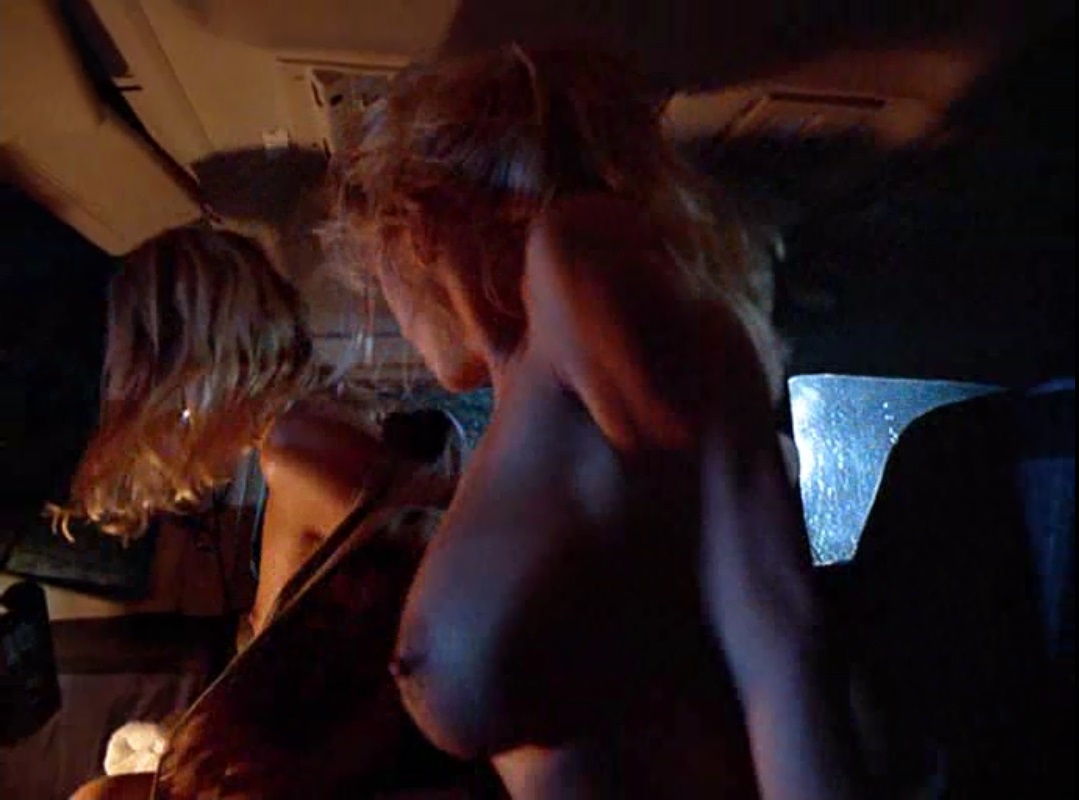
The conspirators
literally bedraggle the place with metal detectors, suggesting in their mad
impatience Leone’s The Good, the
Bad and the Ugly. Freelance guerrillas
(“with our own set of loyalties”) play a part in the brilliant
finale. A senseless act of butchery on the shore,
remembered in death, cf. Herbert
Coleman’s Battle at Bloody Beach.
TV Guide,
“just all wet.”
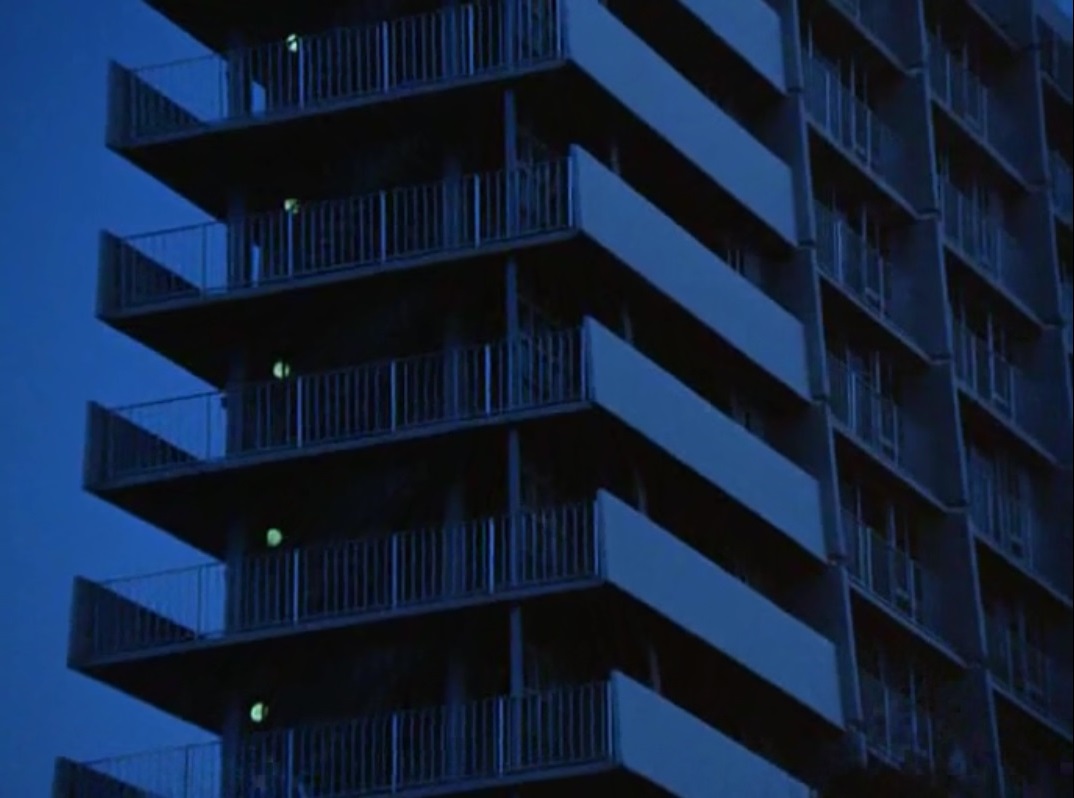
Guns
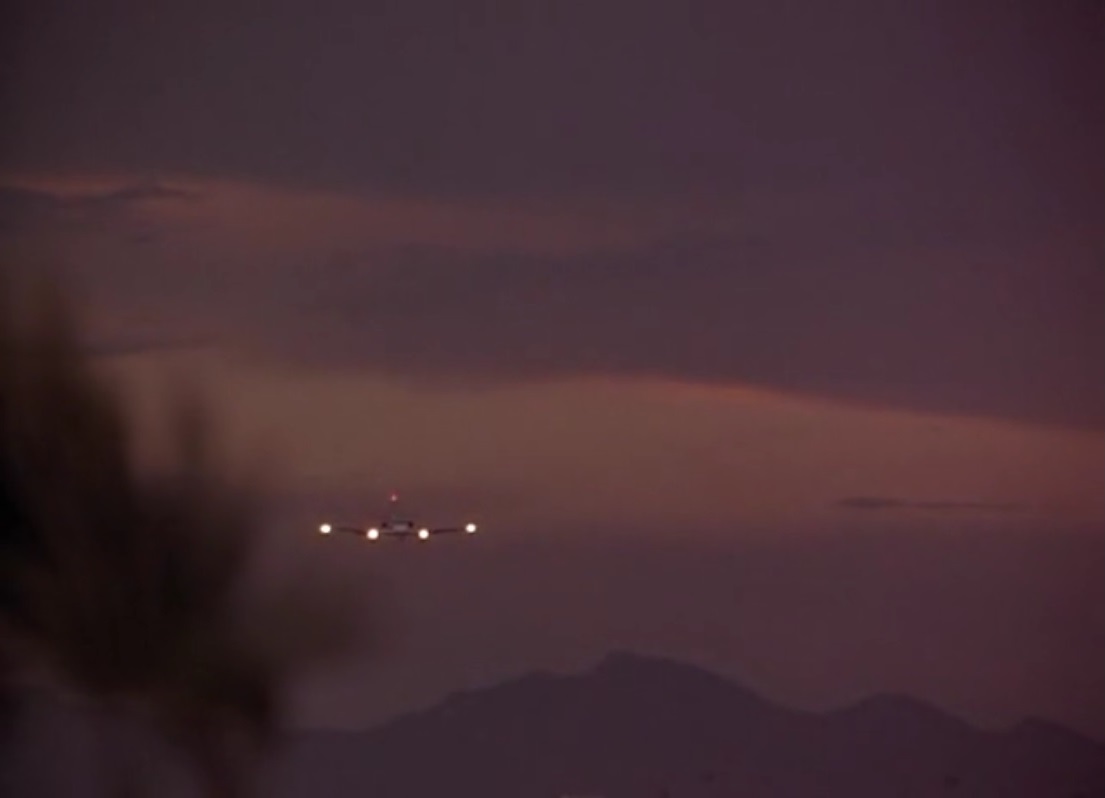
“Fortunately
the war I’m waging is not governed by the Geneva Convention.” Red Chinese combat weapons, smuggled through Molokai
to South America by a Las Vegas mobster (“Degas—the ‘s’
is silent”) holed up at the Rio. He kidnaps the
Attorney General of Nevada, Donna’s mother. A
great and brilliant work, with a brief history of London Bridge (at Lake
Havasu) to crown it. “What’s the
difference between a magician and a terrorist,” asks Abe The Great,
“you, uh, can negotiate with a terrorist.” A
specimen of the latter, top goon to the mobster, reports, “bitch is
uncanny, we didn’t even know she was there.” A
touch of Mickey Spillane, “those two men
came out of the women’s room!” The Detroit
assassins are by way of The Rockford
Files (“Just a Coupla Guys”, dir.
Ivan Dixon). “Unfortunately the forces
we’re up against are not tied to legal obstacles such as the United
States Constitution!”
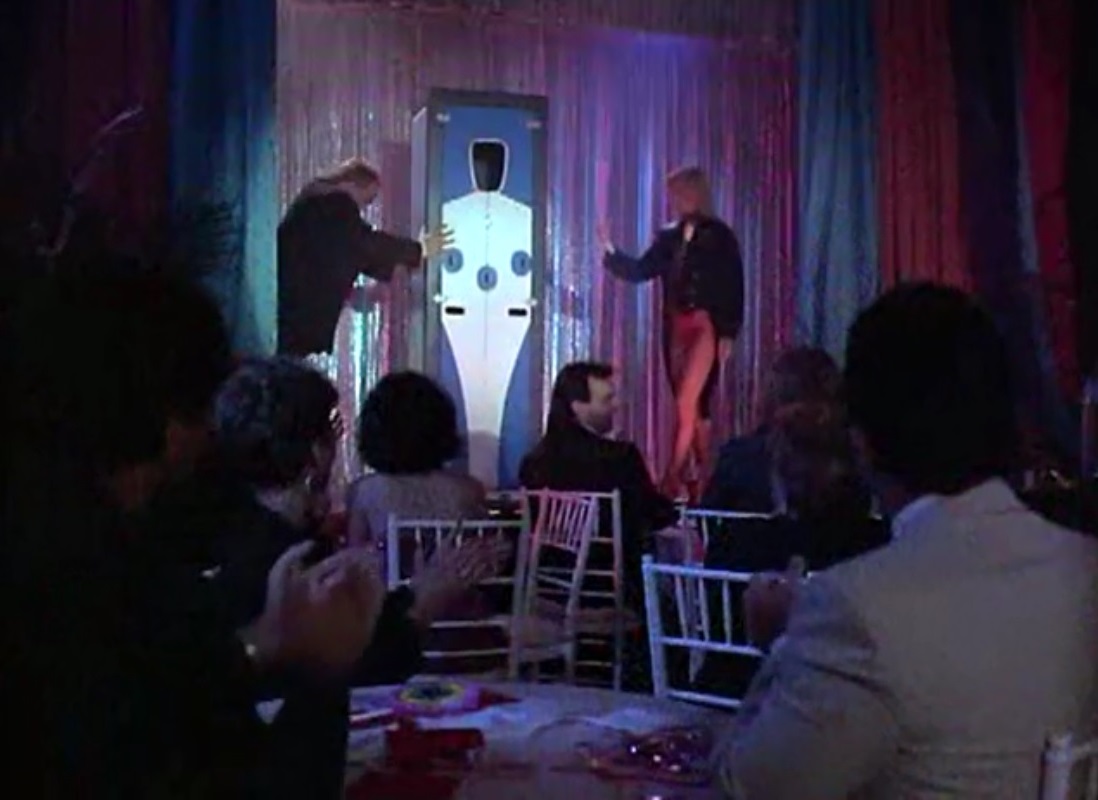
The Rio’s
Copacabana certainly echoes Scorsese’s Goodfellas, if
only by a hair. “My love, do you still wish to
kill for me?”
“I want to
feel the power of controlling life—and death.” For
Abe’s act, cf. Dreyer’s Vampyr, Woody Allen’s Scoop, even Roy Del Ruth’s Topper Returns. The
assassins’ end is by way of Freebie
and the Bean (dir. Richard Rush).
TV Guide,
“assembled according to a strict formula that mixes equal parts skin,
explosions, chases over land, sea and air, and cornball humor.”
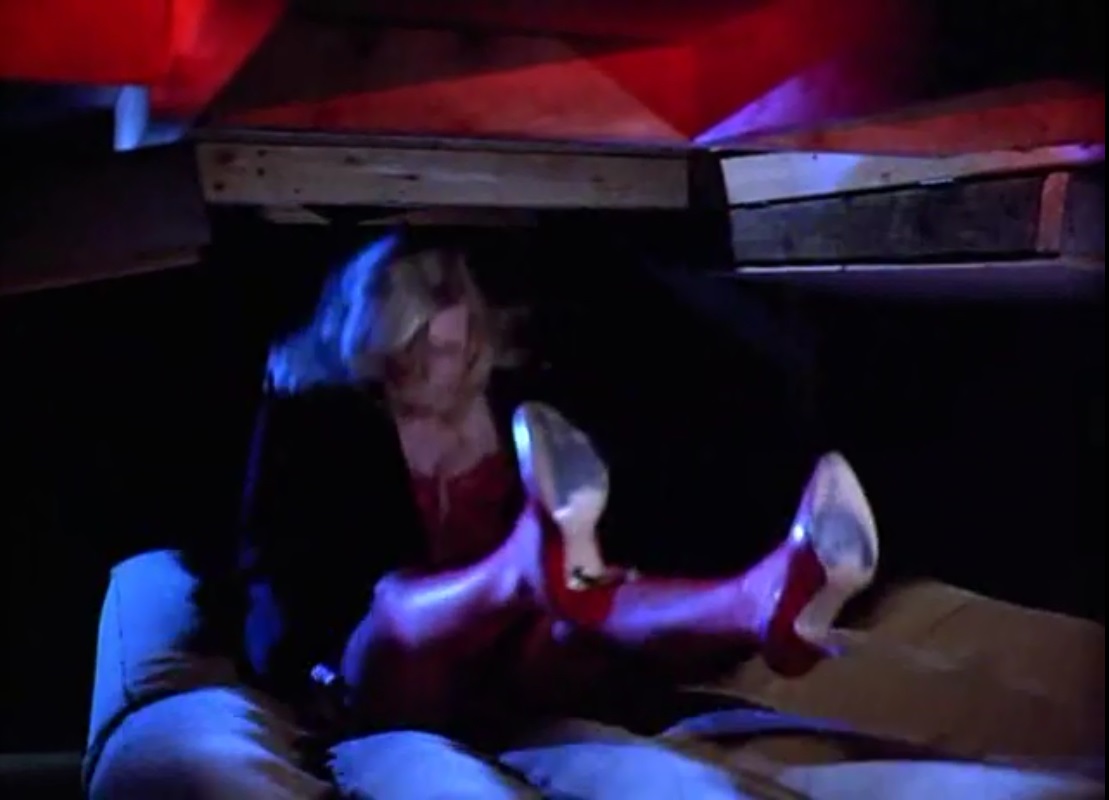
Do or Die
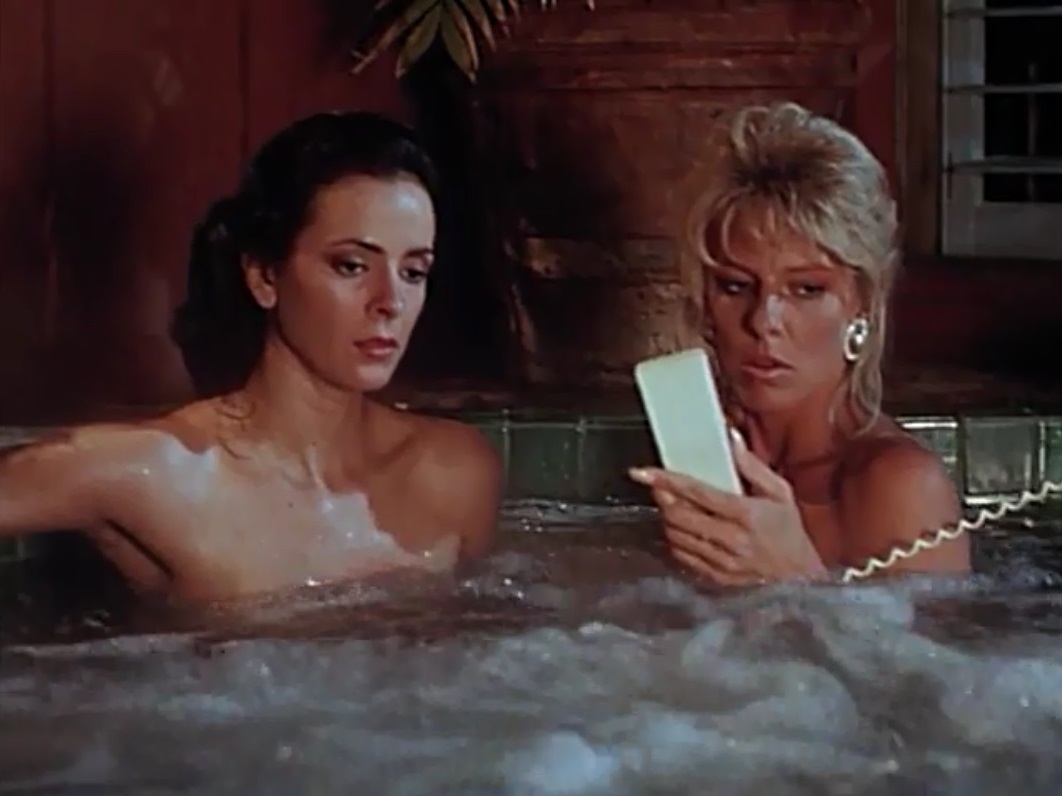
“Six teams
of assassins” sent by Kane like the elements of a Chinese hexagram, to
underwrite his “six-figure donation” to the Molokai
Children’s Hospital Fund in the names of Donna and Nicole,
“posthumously”.

A highly
characteristic shot from Hawaii Five-O
places the ocean waves behind a car driving toward the camera, and adds a
helicopter in pursuit. James Bond’s Little
Nellie (You Only Live Twice, dir.
Lewis Gilbert) even littler. Cowboys and Cajun cuisine,
“lémon,
y’all!”
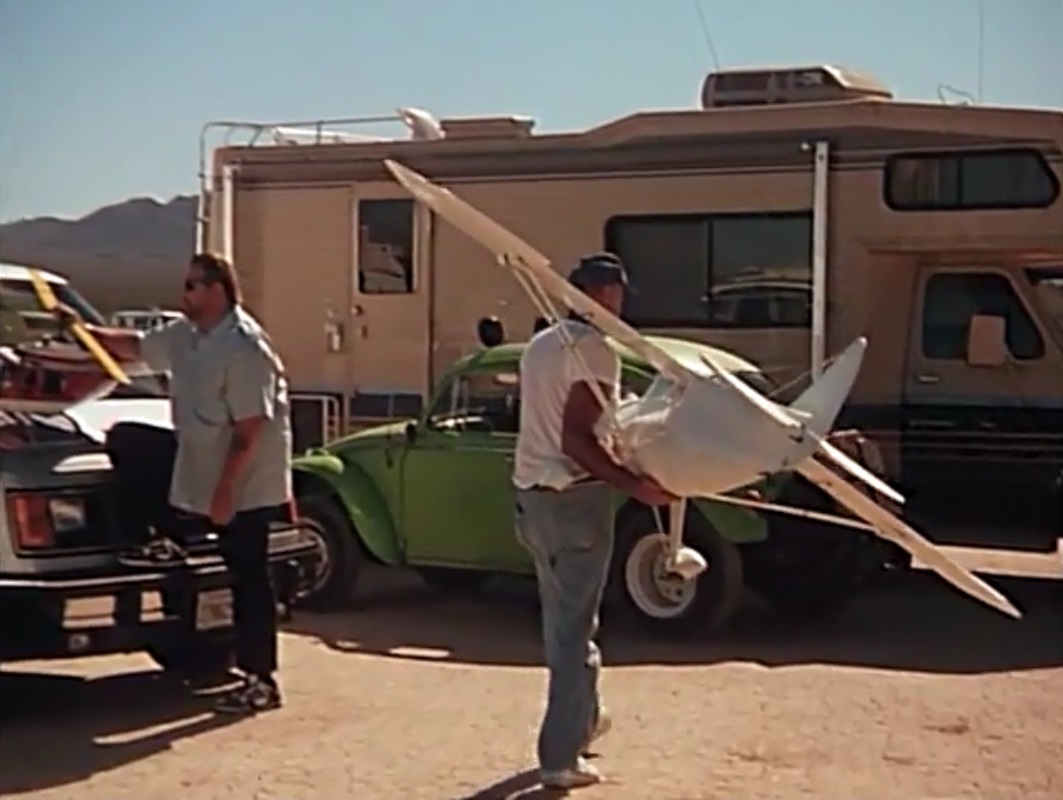
Kane’s
game, “risk tolerance”. Kane’s plan,
“manipulating the American stock market.” Kane,
master of shiatsu, he puts the suck
in success. On the other hand, will Col. Esteban get
his bird back, or “can this be the end of little Rico?”
A John Ford rider (Straight
Shooting, Hangman’s House)
slips off his motorcycle and gets back up again.

The
casual-seeming art of Sidaris is what John Singer Sargent would probably
describe as a “Vulcan’s net” to catch the wriggling, elusive
beauty of his locations and the formal elements of each scene.
The lackluster frigorific of his icy models (Nicole’s Ninotchka
lovemaking is “no frills” but tequila, salt and lime), sumptuous as
the autumn landscape of the climax, plays a joke on itself as two dummies in a
duck blind invaded by ninjas. Littlest Nellie
(“this is a scale model of a UH-1B Huey helicopter”) launches two
missiles, the wooden structure is blown to smithereens in a gust of flame,
boards and studs float to the ground beside the pond. Cut
by degrees to the girls in gold or pink sequins like the scales of fabulous
creatures, blue sharkskin or black, toasting victory with champagne.
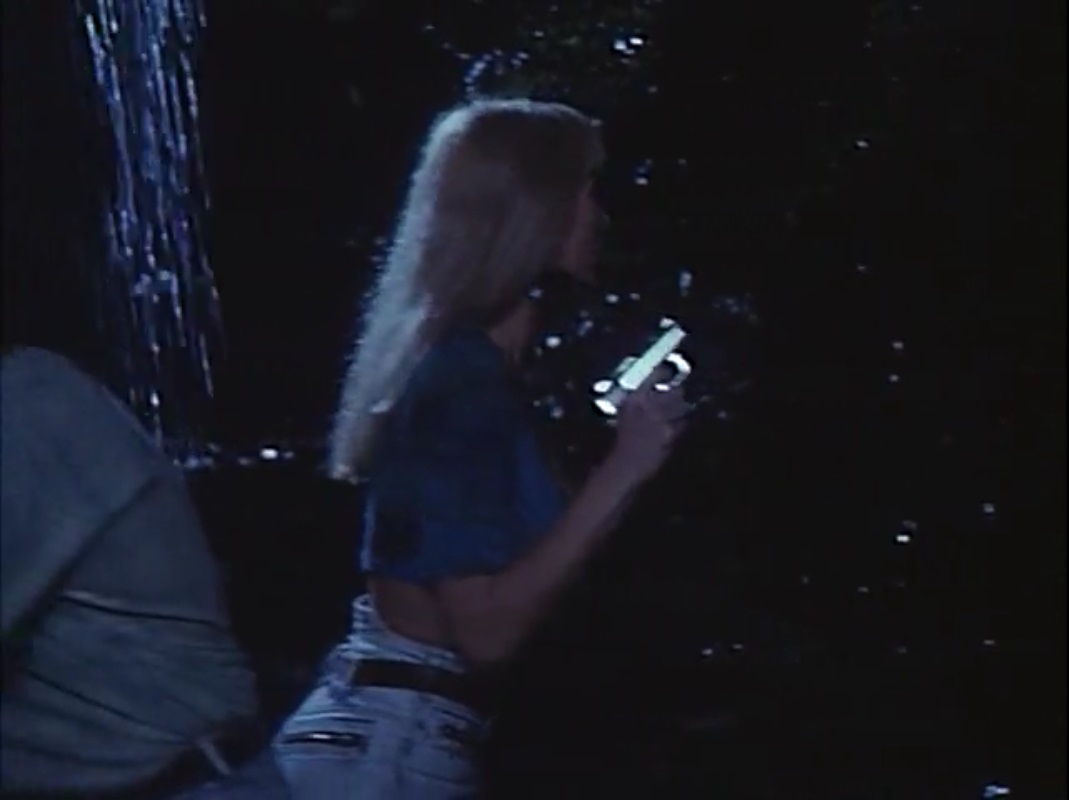
TV Guide,
“gets off to a strong start before settling down to the usual exhibit of
blazing bullets, squealing tires and luscious bodies.”

Hard Hunted
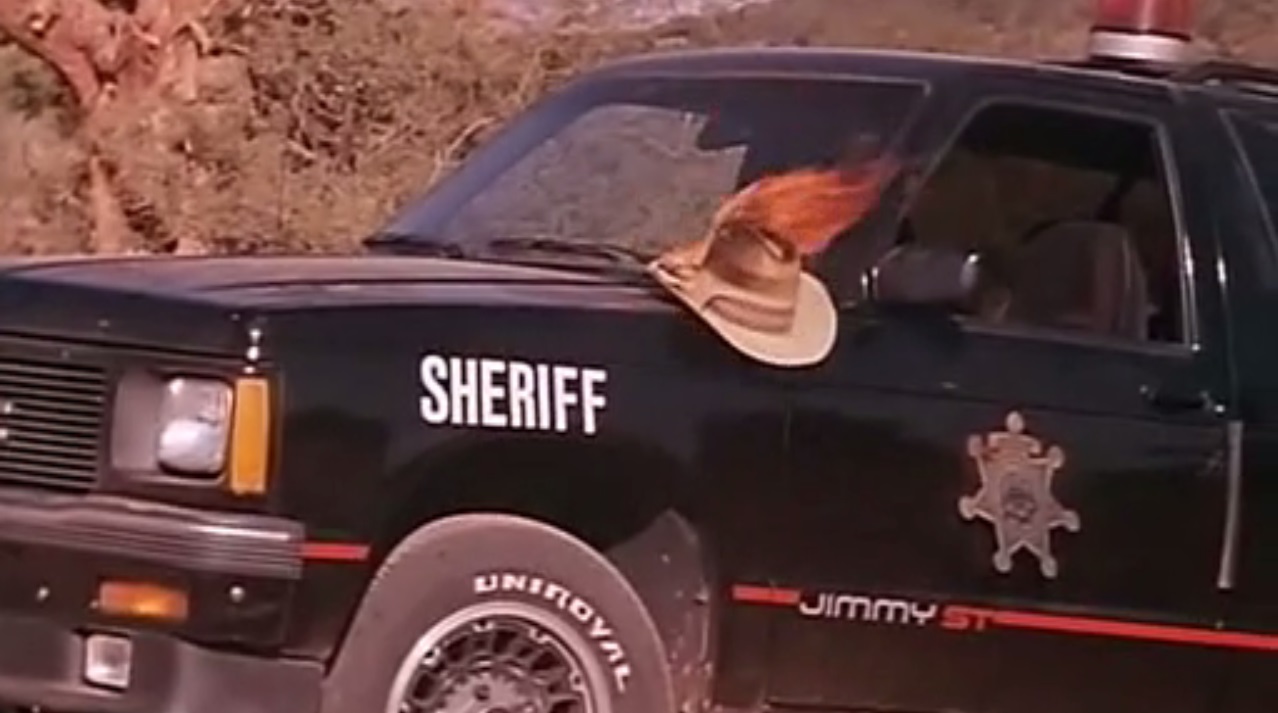
|
After dinner and drinks on the
beach we sit and watch the sunset, then it’s off to party all
night long— tell me how high can one get? We play and dance and we make
romance, tonight I’ve got the
mike— and as for tomorrow, well I never
met a zombie that I didn’t like. |
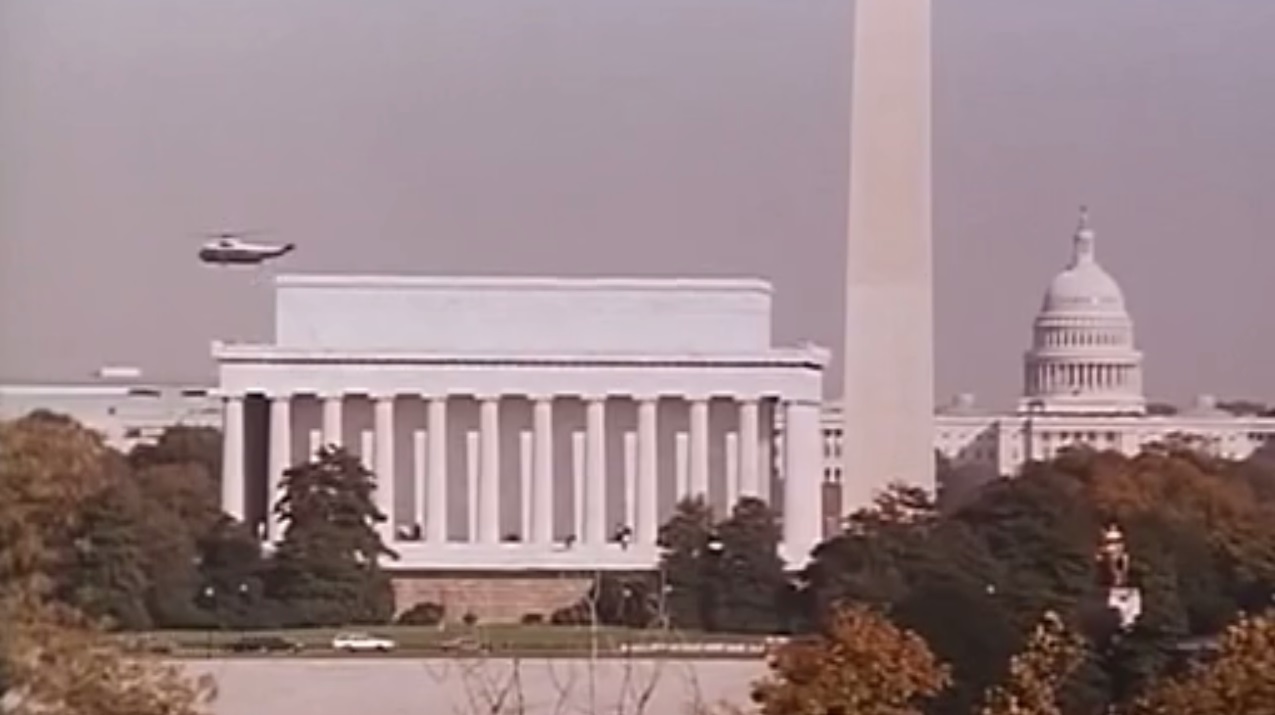
A Red Chinese
nuclear trigger secreted in a jade Buddha, snatched and ready for shipment to the
Middle East or any Third World battlefront (cf. Polanski’s Frantic). Russ Meyer gets his due at Edy’s
and “just north of Sedona, Arizona, where the magnetic vortex of
Cathedral Rock is a site of great regeneration” (in Hawaii, KSXY
transmits coded signals like the Maquis against the criminal mastermind Kane,
belled in Do or Die). Sublimely filmed on location, with Little Nellie herself à la John Badham’s
Blue Thunder (“damn,”
exclaims a deputy out of Rocky and His
Friends, “there’s sump’n you
don’t see every day!”) and Doris Wishman’s
ear for a good song.

|
On and on my heart keeps pounding, on and on the sea keeps rolling on. Down and down my love keeps
drowning, you’re the sea and I keep
going down. |

“Fuck,” says Kane foiled by Donna,
“an astonishing woman.” The smuggler chief
is vexed by men with “no manners”, nevertheless he “could
sell a woman like that for big money.” A couple
of hirelings with an Acme hovercraft, “when we are finished wid her she will be singing de song of death, and Lucas will applaud her from hell.”
|
LUCAS:
You wouldn’t have any explosives on you, would you? EDY:
Yeah, but you’re gonna have to carry me home. |
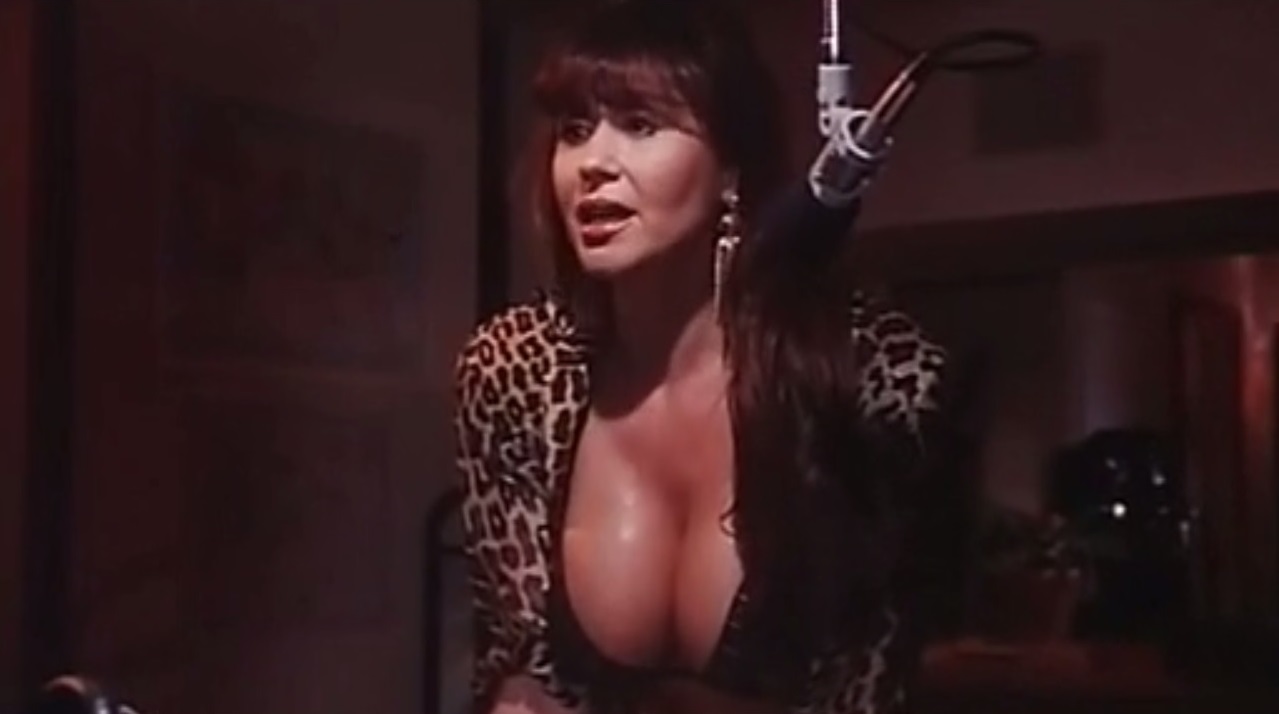
“How you wanna plan this?”
“We just go
in, and kick ass.”
“That’s
a plan.” The revamped Little Nellie and her
bearded banzai pilot Raven are neatly and rather spectacularly exploded.
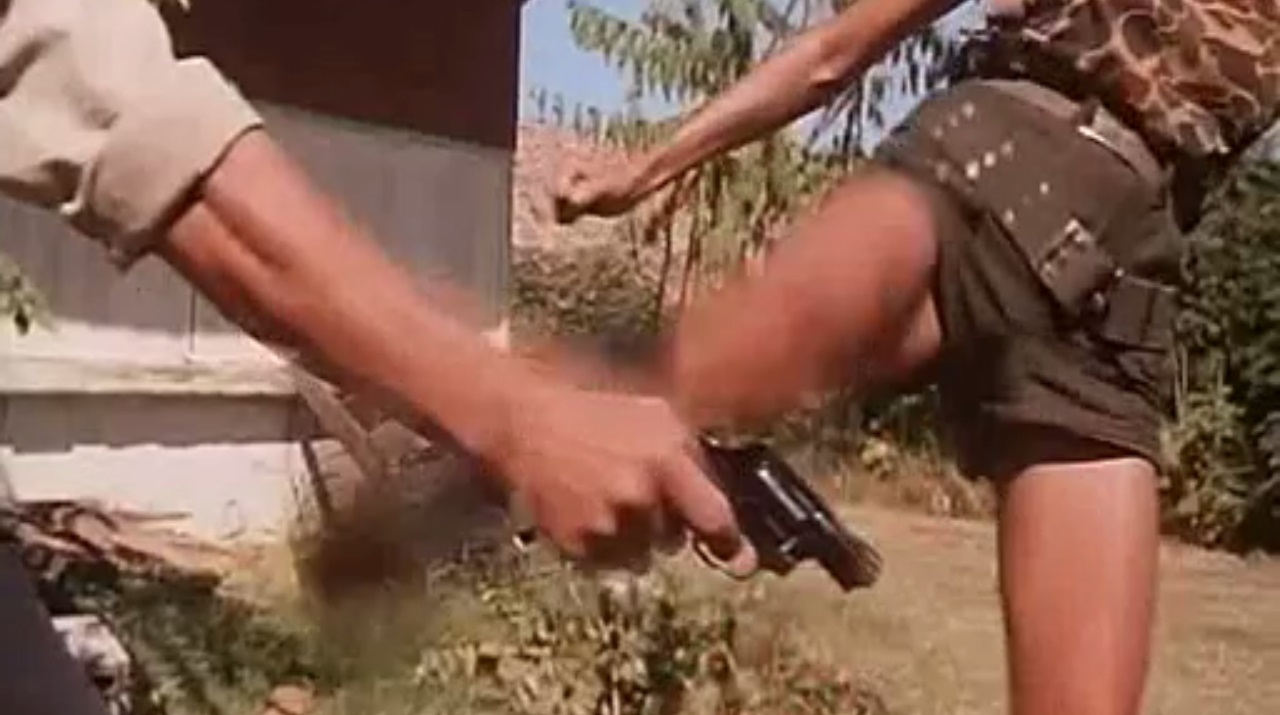
TV Guide,
“the familiar Sidaris roster of superagents,”
which is to say “the usual gang of idiots.”

Fit to Kill
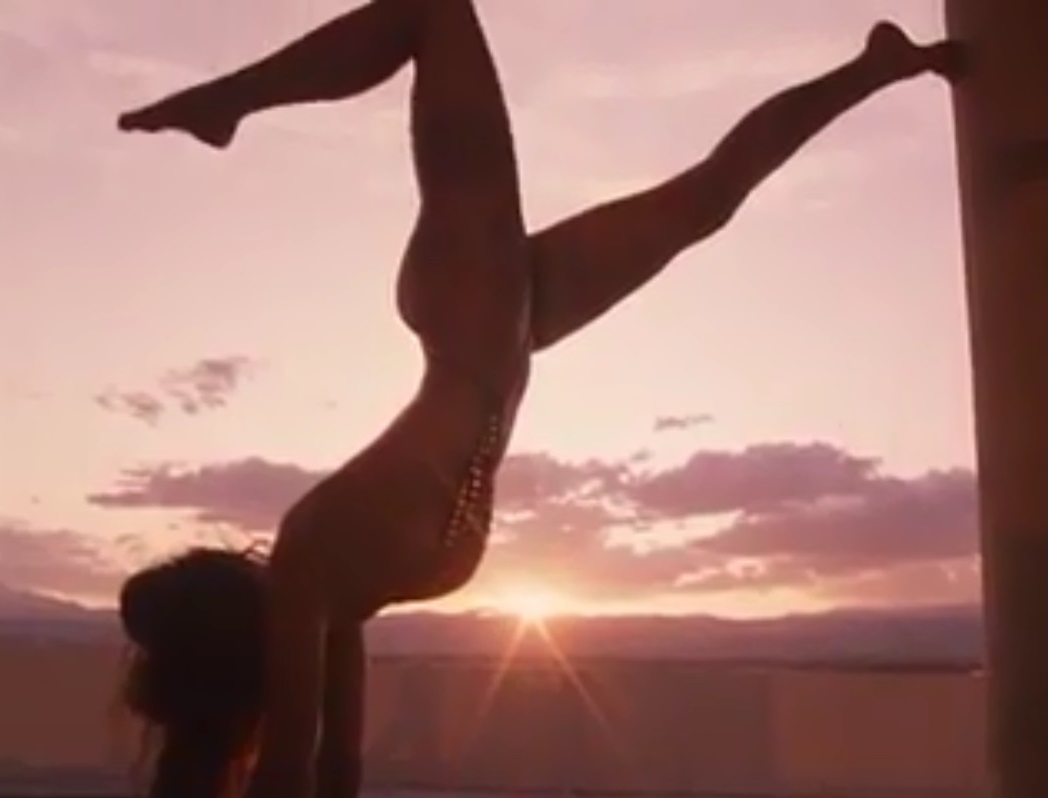
New Las Vegas, autre
affaire de Chang (cp. Hard
Ticket to Hawaii). The opening titles suggests Peckinpah’s Cross of Iron, the opening sequence
Terence Young’s From Russia with
Love. The director, who resembles Fellini the way
Sydney Pollack resembles Pinter, crosses beautiful deserts of Meyeresque hommages (Faster,
Pussycat! Kill! Kill!,
also Motor Psycho and Supervixens, etc.) to
end in the sea of E la nave va.
All the poetry of
Sidaris’ films is here in separate scenes that, taken individually, are
quite remarkable for their speed and eloquence (the editing, particularly of
the finale, is once again a thing of beauty). Take the
great statuesque brunette in miniskirt and Wellingtons and fingerless black
gloves (even breastplates later) who inexpressively loads a remote-control toy
helicopter with palm-sized explosive rockets. This is
a Dieterle specialty, Mallarmé’s “Other Fan”,
|
O dreamy one, so I may dive Into pure delight unplanned, Know how to, by a subtle lie, Keep my wing within your hand. |
Or the lady with
a microphone in a radio studio (KSXY, “The Voice of the Friendly
Isle”) at night, nearly bare under her wrap, accosted by a burly masked
marauder whom she fends off with numchucks until he
draws a knife and is confronted by a man in a white shirt (Mikael
Petrov, emissary of the C.I.S.) who almost gains the
upper hand when the brute pulls a small pistol from behind his back and gets
away. The man wonders who he was, but the lady
doesn’t know. “I had no idea that
people’s deputies are trained in combat.”
“Well, yes,
we’re being trained in almost everything now.” The
beautiful technique in counterpoint with these shenanigans is in a suite at the
Aladdin, a magazine couple (the brunette assassin and her victim) are having a
candlelight supper, the camera curves around each one to see the other
reflected in the windows as they converse (cf.
Losey’s Boom) on matters
pertaining to Hard Hunted and the
revenge of Kane, “my former associate Mr. Genghis Po hired you to kill me. Tell me, is he still masquerading as a Red Chinese agent?” Or it’s in the final approach of a jetliner
down the length of a Honolulu breakwater. “Think
about it, Mr. Chang. Would Red Chinese agents on a
covert mission in the United States run around with red stars on their
uniform?”
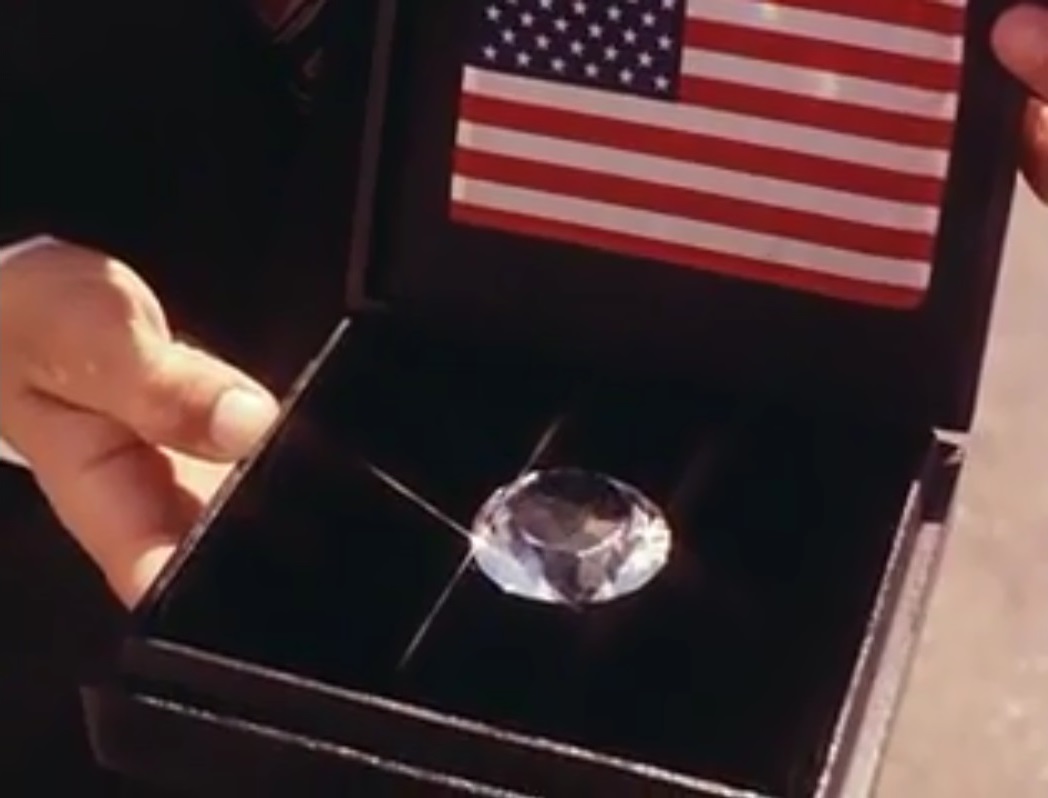
A Sidaris film is
like a two-hour vacation in Hawaii, which is fairly what Haydn had in mind. A handsome couple are picnicking on the beach, he takes
out his Canon while she poses easily and the scene becomes a figurative photo
shoot. Two comical goons in a nearby tent send a
remote-control toy car to blow them up, but it returns home and fires their
tent into the air. Miraculously, they are only singed.
The MacGuffin is
the Czarina’s diamond, stolen in Stalingrad by Nazis (“the Germans
penetrated the heavily-guarded museum area where the Alexa
diamond was kept... it was to be given to Hitler in celebration of victory on
the Eastern Front”) and again in South America, destined for the
Commonwealth of Independent States. A mirror to the
action is a wild goose chase after a purloined bauble that is a homing
mechanism on the very man who stole the diamond on Maui, “notorious arms
dealer” Kane and so forth. A dogfight of toy
helicopters decides the issue when the brunette on her motor yacht is blown to
smithereens.
TV Guide,
“seems to be slumming more than usual.”

Day of the Warrior
L.E.T.H.A.L. Ladies
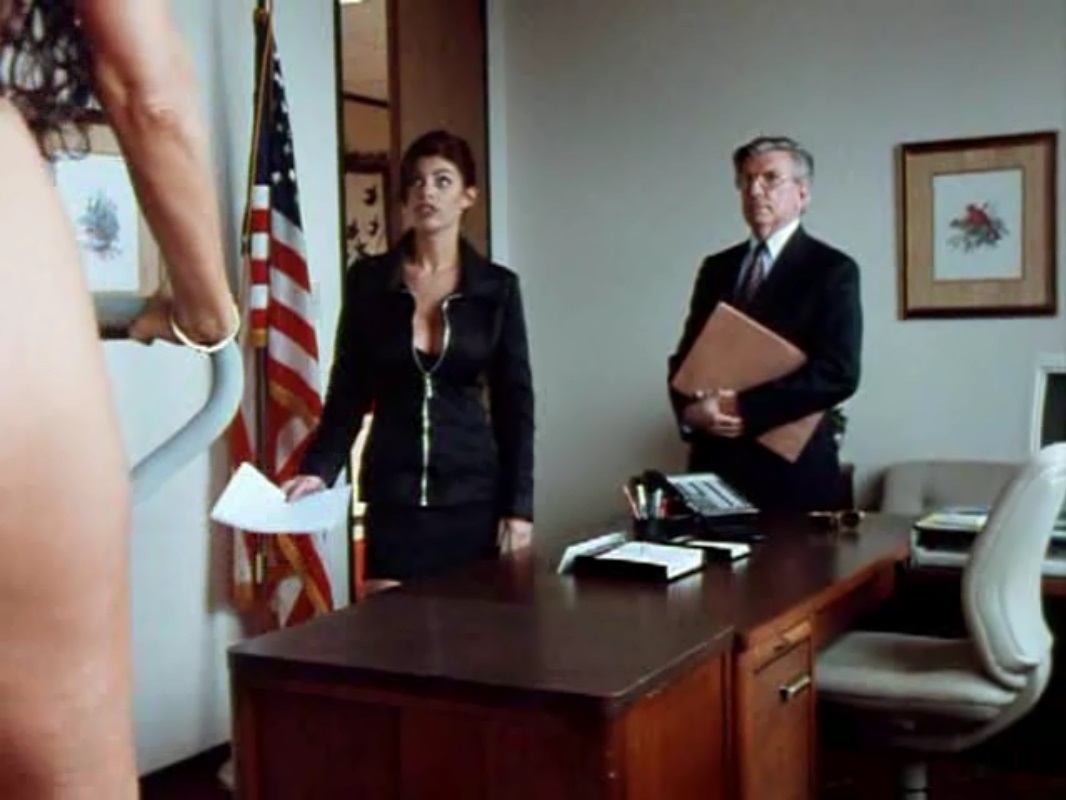
“Fine art
smuggling... diamond-pirating scam... porno operation.”
He has a cabin on Lake Dallas and until “the Cold War ended”
was an agent for the CIA in Russia. “Let’s
face it, we reek as investors,”
the two Malibu “hitters” Smith & Barney are “Harvard
Business School grads—well, give or take a class or two.” Cobra in her mirrored bathroom undoubtedly recalls
Gen. Turgidson’s secretary in Dr. Strangelove (dir. Stanley Kubrick). “The S.O.B.” is furthermore “involved in
furnishing women for clients in the Mideast—white
slavery, if you will” (cf.
“Our Man in the Harem”, dir. E.W. Swackhamer for McCloud).
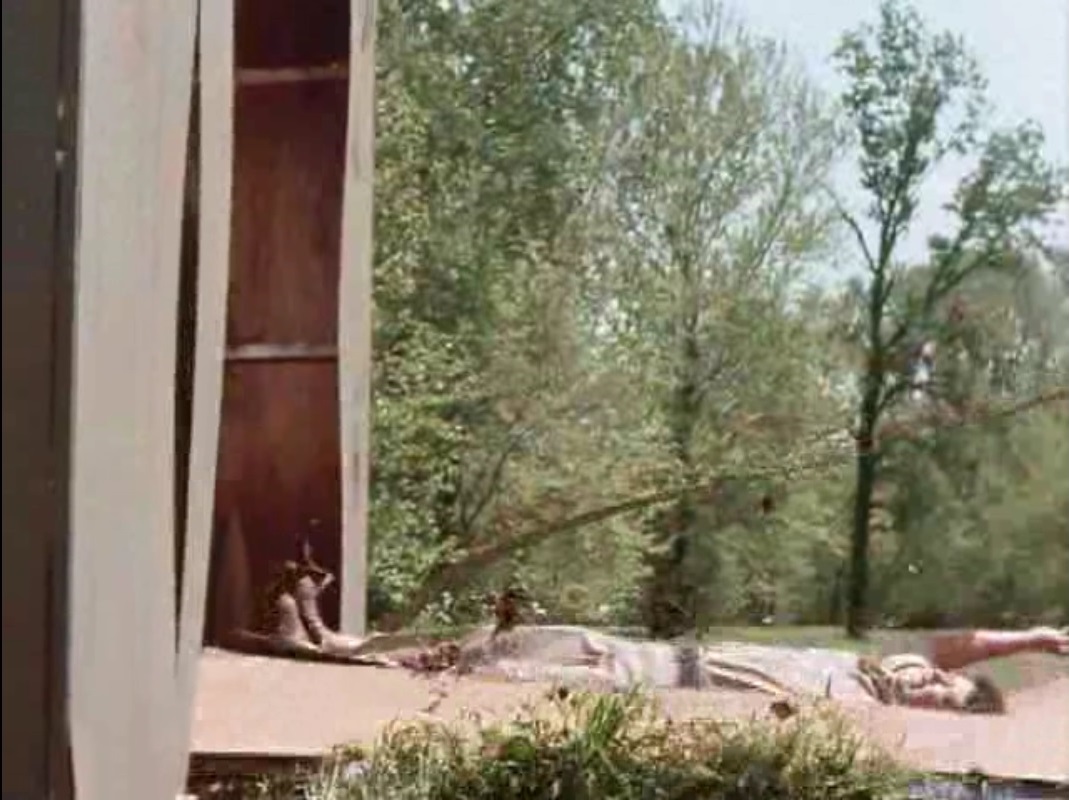
“That damn owl again! Shut up!” Far
be it from anyone to accuse Sidaris of anything like a satire here. He means to be dazzling, and is so. Still,
even in so fast-moving and epical a work, one can find comforts here and there
that satisfy a taste for japes at things overtaken by seriousness as a result
of ad campaigns and wishful thinking, such as the remodeled Rodeo Drive into
which the fulsome superagent Cobra strides so
fantastically (cp. The
Taking of Beverly Hills, dir. Sidney J. Furie). It’s
a fantastic place, a sort of Disneyland town architecture, and there’s no
surprise in discovering what’s behind the façade, on the contrary. The pleasure of recognition also accompanies Willow Black
in Las Vegas, where another L.E.T.H.A.L. agent undercover as impressionist
Elvis Fu is inadvertently knocked to the floor by her enormous superstructure
in a single turn from the waist (cp. The Fiendish Plot of Dr. Fu Manchu, dir.
Piers Haggard). And there are Washington, D.C. and
LAX.
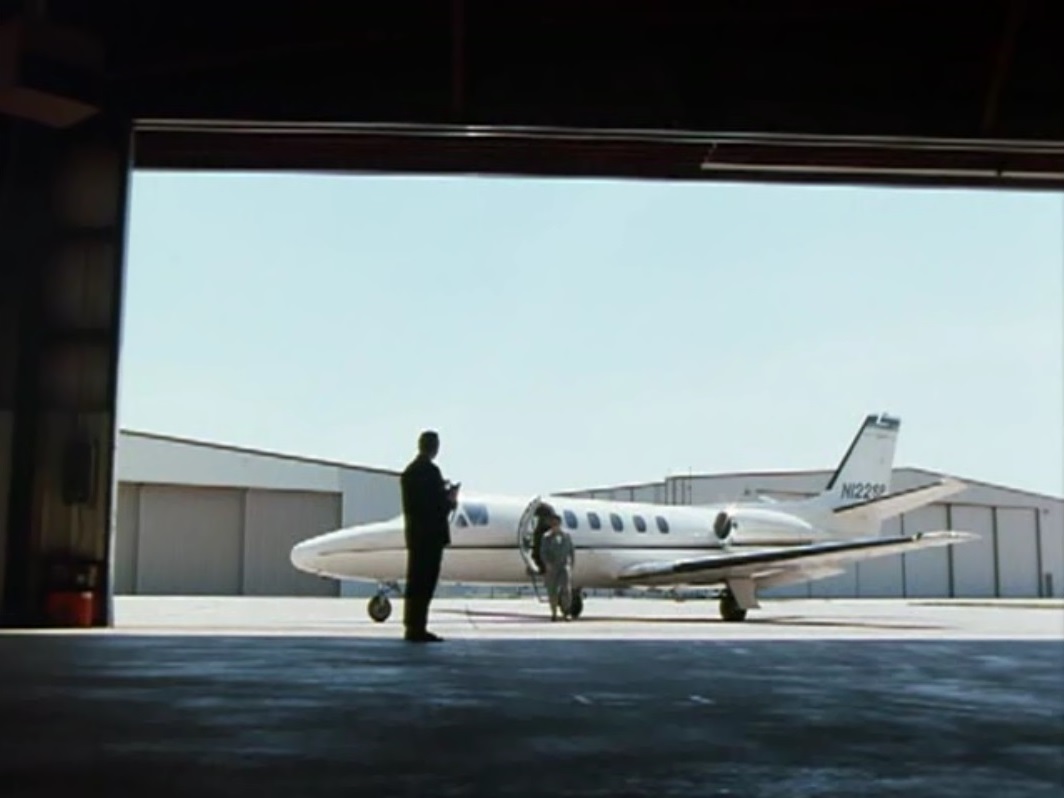
“This used
to be a sleepy little town, now look
at it!” A fine parody of The Fighting Seabees (dir. Edward Ludwig) has Smith & Barney
blazing away on a bulldozer. What did the Chief of
Operations, Dallas Texas Division, do in her former job at Disneyland? “I was one of the rides.” Sidaris
is so inspired he rigs up a video shoot so the artistes may be seen in harness,
as it were. Charming fashions are worn by the ladies,
miniskirts in black openwork or gold lamé, and of
course Willow Black’s Old Glory two-piece for the dramatic fight in the
ring with the Warrior. A jet landing in fog makes two
pretty contrails. The inexpressible sense of Lichtenstein
is multiplied by example (Dan Flavin is perhaps
evoked around the ring). Cobra lights up a cigar, the
camera pulls back to reveal she’s sitting on her beau hunk’s chest
as she puts a cellphone to his ear.
Longwood General Store makes a cameo appearance in the style of Walker
Evans.

“We leave
tonight, on my private jet for South America,” cf. Hitchcock’s North
by Northwest. Julie Strain is magnified in a red
vinyl two-piece combination by a low angle, statuesque (her lovely face
receives the homage of a close-up in slow motion, Sidaris demonstrates the
height of good taste by eschewing “slo-mo”
for the genuine article as a rule). The agency mole is
nicknamed Hard Drive and paid off à la Savage Beach
with interest, him and a “cheesy blonde” moll. The
great naval battle on the bayou (our side is the VIP Vindicator, cp. Picasso Trigger) replicates Jutland, one
feels certain. The Warrior is played to the very hilt
by Marcus Bagwell (unrecognizable as Buff) and is of course the character
invented by Rod Serling in Ralph Nelson’s Requiem for a Heavyweight,
“rah!!”
TV Guide,
“it's hard to imagine what he considers the real raison d’être of these films.” Sandra
Brennan (All Movie Guide),
“this actioner features plenty of exposed
mammary glands, erotic dancing, fighting, explosions and gunfire.”

Return to Savage Beach
L.E.T.H.A.L. Ladies
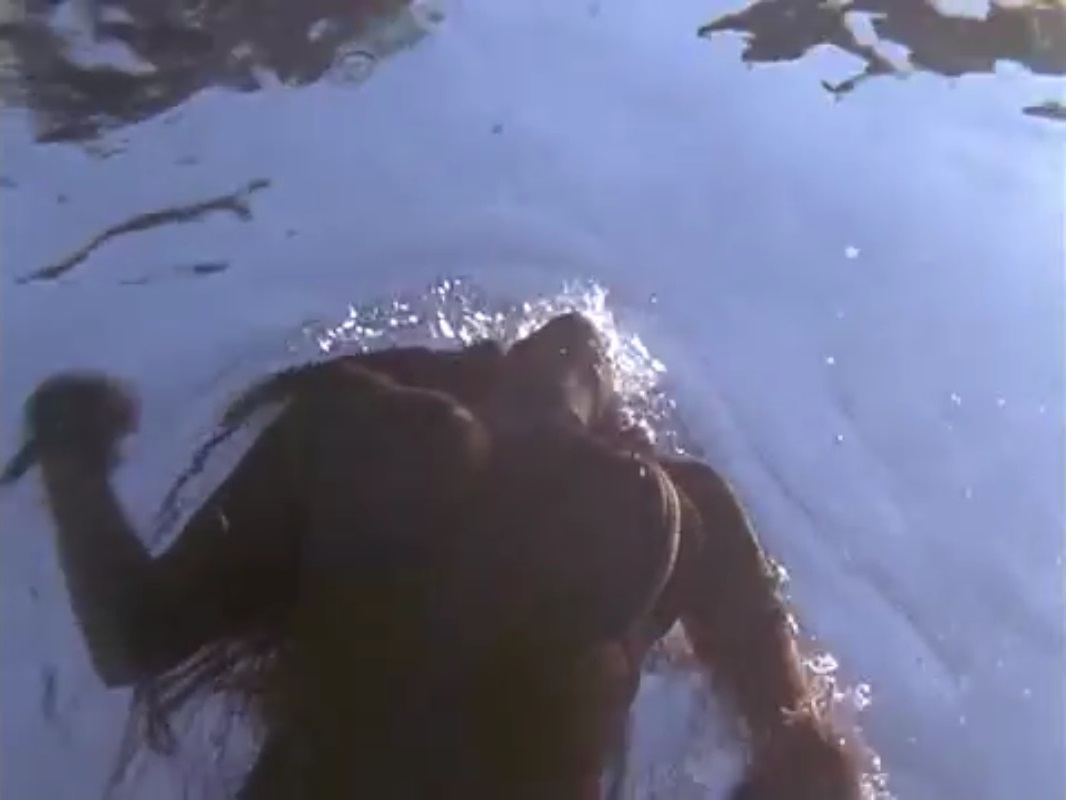
“Through
the years, political bandits ordered stolen treasures to be hidden on a remote
island in the Pacific.” The beautiful feint is
on Lake Dallas terrorists armed through Mexico by Red China, cf. “The Best Laid Plans”
(dir. Alan Crosland, Jr. for Peter Gunn). “It’s OK, Fu,” short for Fujitaka, “the Warrior’s on our side now.” Ninjas with painted faces, “kabukis”. If
Lichtenstein, then Warhol... Aboard the Atlantis out of Maui for an undersea
voyage to Savage Beach.

Interpol Berlin and
a Swiss Army knife, Goldfinger (dir.
Guy Hamilton) and The Andromeda Strain
(dir. Robert Wise). A sort of “Slaughter on
Tenth Avenue” with Officer Naughty (cf.
Lindsay Anderson’s O Lucky Man!,
Frankenheimer’s The Holcroft Covenant), “Prisoner of Love”. All of this with a sense of Donovan’s Reef (dir. John Ford) in the imperturbable background. Perhaps, after all, the ægis of Ken Russell’s Lisztomania,
certainly Matt Helm. A tale to tell out of Savage Beach, “I was contacted by
corrupt politicians who were stealing the Philippines’ national
treasures, the nation’s gold reserves, jewels, precious stones, and a
priceless Buddha filled with diamonds.”

Charlie the Tuna
taught us the difference between what Frost and Nabokov mean by æstheticism, and what on the other hand Beckett means by it. Watching “Degas and the Dance” on Great
Performances is unmistakably a case of tuna with good taste. Frank Langella narrates with
those elongated tones that on latter-day Broadway suggest elegance and cultural
refinement. A curatrix
points out her favorite pastel. Return to Savage
Beach is the real article, here is the real boredom of pretty people
enlivened by color that Peebish mummery cannot
simulate, the “time between” that makes Uncertain, Texas a very
touching location shot. Models and amateurs (and Buff
Bagwell) go through their motions with armaments and jet skis and whatnot, and
with all due respect to TV Guide, if Baywatch and Miami Vice
were capable of this cinematic experience, they had every resource available to
them. Sidaris is not so foolish as for a moment to
think of replacing the joy in operatic abandon of Russ Meyer, but he carries
the mantle nonetheless in a style that is very different yet conveys the smile
of ineffability throughout. The villain wears a Phantom of the Opera mask (Webber-style)
and dances with a lingerie model, a willowy blonde in a low-cut two-piece
pantsuit of red vinyl who skates into a L.E.T.H.A.L. security installation with
pizza and soft drinks that are Mickey Finned, finds the secret file containing
a computer disk and must cross the room to the computer, which she does in a
medium shot just indicating she still has her skates on. These
are small things. Much of the film is the fun of
playing soldiers. All of it is exquisite.
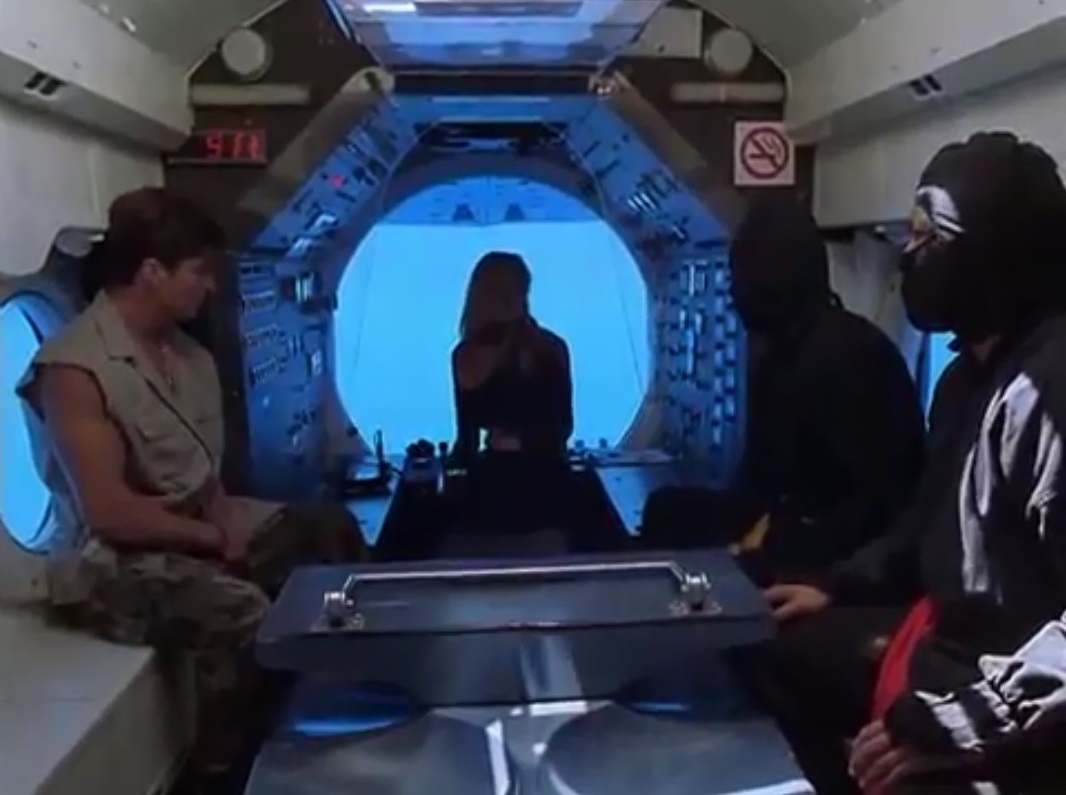
“It seems
that way on the surface, yes... but
alas, she turned out to be an Interpol spy working for M1, a female James Bond
who loved money more than honour.” A Mission: Impossible mask (Geller-style).
|
Which ending does this story have? Can I believe what I see? |
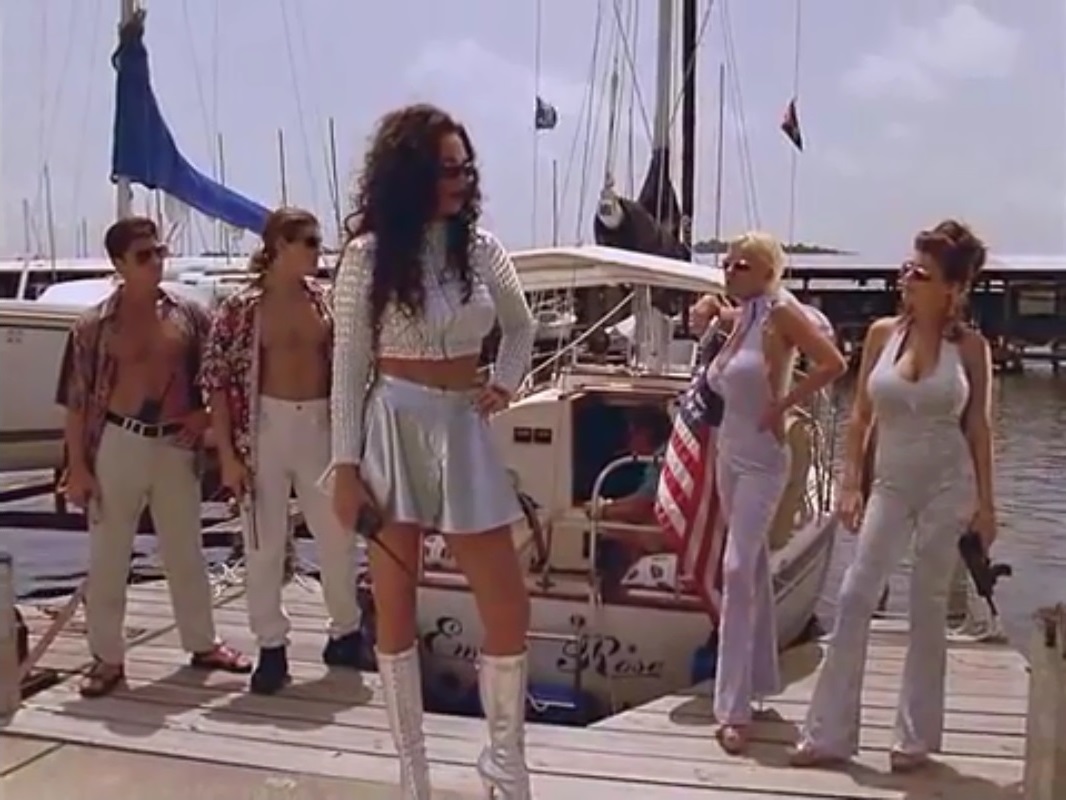
TV Guide,
“merely
meant to be tongue-in-cheek, campy fun.” Sandra Brennan (All Movie Guide), “stuffed with the trademark busty beauties, explosive
low-budget special effects, flesh-thumping martial arts and unintentionally
goofy dialogue that Andy Sidaris movie aficionados have come to expect and love.”
